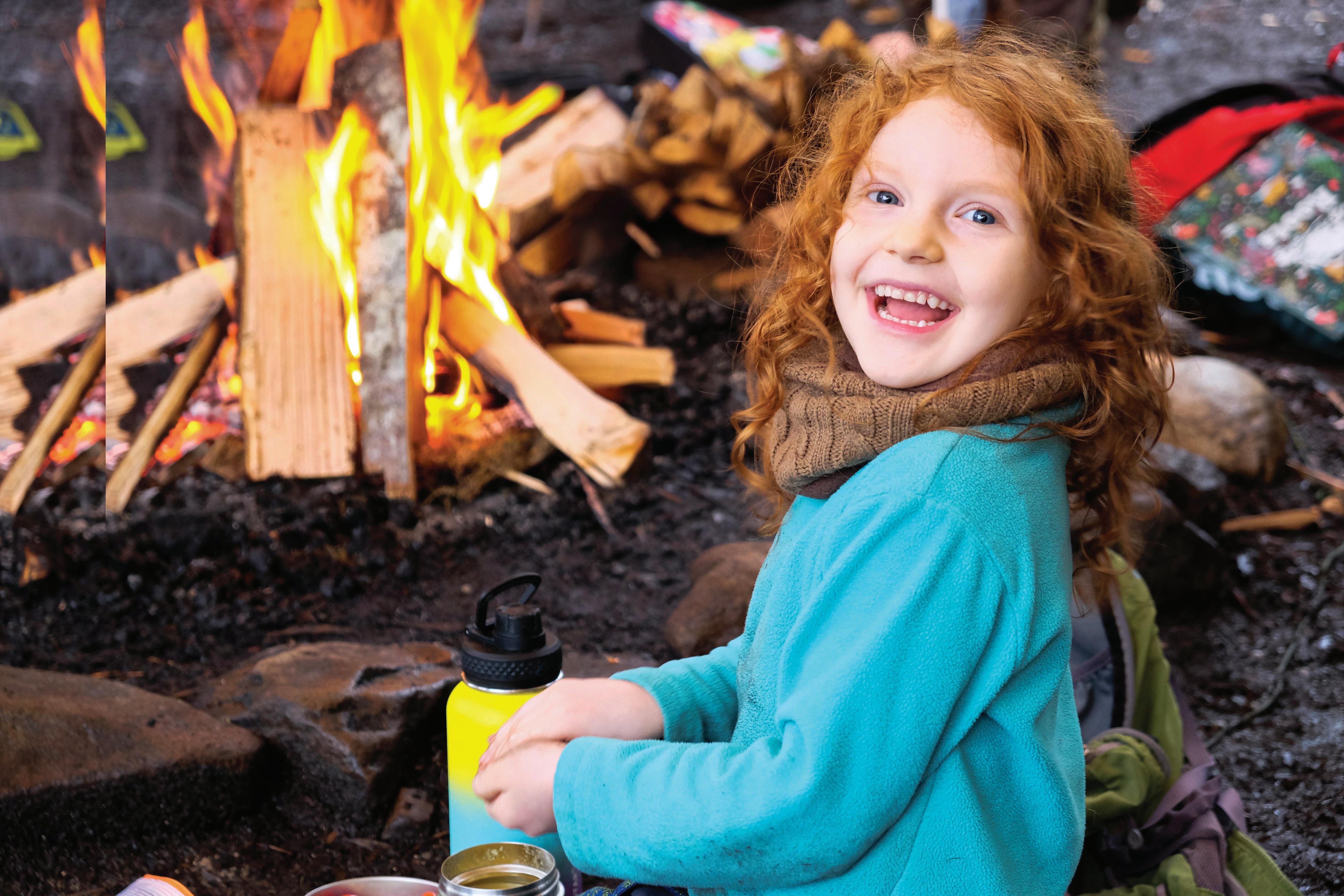













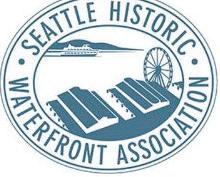






















































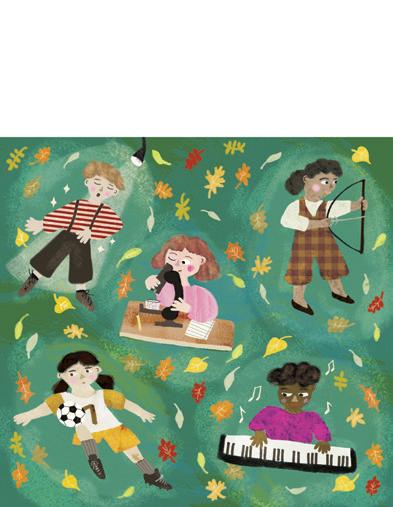



























































































There is something so bewitching about childhood heroes. Mine creates musical magic with his familiar voice and lyrics about kindness, inclusion and, yes, silliness. His exuberant songs have sold some 15 million records. He has inspired, entertained and captivated tens of millions of young fans for nearly 50 years. His concerts are legendary.
Perhaps you’ve heard of him. His name is Raffi.
Raffi, spritely at 75, will return to Seattle September 23, where the beloved songwriter will perform for a sold-out audience at

the Paramount Theatre.
He has been dubbed “the Beatles of kids’ music” and the “most popular children’s singer in the English-speaking world.” He’s performed for at least one U.S. president and the Dalai Lama. And, in a moment seared in his memory, Raffi sang for Nelson Mandala.
“That was quite something, singing for him,” Raffi said of the latter experience. “He stood up and he shook my hand. I thought I was going to faint. It was so beautiful.”
Raffi’s authenticity radiated through the phone (a real one, not a “bananaphone”) when I recently spoke with him. He was at
his home on serene Salt Spring Island, the largest of the Gulf Islands off the Vancouver, B.C. coast. He lives there with his 7-year-old “fur baby” Luna — the canine inspiration for 2018’s ‘Luna’s Song.”
Despite his immense fame, Raffi has no illusions of grandeur or inflated ego. His first order of business in our conversation was to ask the names and ages of my children, followed by thoughtful questions about them and me. “We’ll dedicate this little interview to them,” he said, when the picture of our lives had been sufficiently painted.
A world of Beluga grads
It is this simple, but important, con-
PEPS offers peer-support programs for expectant parents, parents of newborns, infants, or adolescents and teens, plus affinity groups. Families can connect on weekdays and weeknights in virtual and in-person groups.

Flexible

nection to the millions who listen to his music that says all there is to say about Raffi. He cares about the mark he leaves on the world, not accolades.
“Beluga Grads often tell me that my music was the soundtrack of their childhood,” Raffi said. “That’s a tremendous honor. I know that when music is near and dear to us as young kids, we generally won’t lose that feeling. I’m just very grateful to know that my music has an enduring presence in people’s lives.”
If you hadn’t heard it before, the title “Beluga Grad” applies to anyone who listened to Raffi as a kid — folks who know the crazy things that happen “Down By the Bay” or the precise method to “Shake Your Sillies Out.” That means Beluga Grads span from Baby Boomers to Generation Alpha. Though impossible to fully quantify, Raffi estimates that there are “tens of millions” (that’s five generations) of Beluga Grads.

The Children’s Troubadour Raffi was born Raffi Cavoukian to an Armenian family in Cairo, Egypt. When he was 10, his family relocated to Toronto, Canada. And in 1974 he stumbled into his first gig, a favor to his motherin-law who asked that he perform at the nursery school she ran. Since that fateful performance, Raffi has released 26 albums, some of which reached gold and platinum status in North America. He’s been nominated for three Grammys, holds four honorary degrees, and received the Order of Canada, the nation’s second-highest honor granted to its notable citizens.
Raffi’s first — and still most popular — album, Singable Songs for the Very Young, was recorded in a friend’s basement for a few thousand dollars
and released in 1976. The singles from that album alone read like the top five of children’s hits, even now in 2023.
“I get the best fan mail,” Raffi said. “They’re usually drawings from young kids, but also parents send me wonderful notes. I just love my fans. I’m so privileged to do this work.”
The song “Baby Beluga” from the 1980 album of the same name is perhaps the singer’s most renowned, and was inspired by an unforgettable encounter with Kavna, a young beluga who lived and died at the Vancouver Aquarium. When asked if he ever tires of singing it these 43 years later, Raffi’s answer was immediate and firm: “No, I don’t. It’s always a joy,” he said. During the upcoming Seattle concert, he adds, “we’re going to be raising our voices to that beautiful creature once again.”

In 1990, the musical artist who taught troves of children to “Brush Your Teeth,” released his first album geared toward adults and climate advocacy: “Evergreen, Everblue.”
“We need climate action commensurate to the feel of the threat,” Raffi said. “Every family that cares, every parent that cares to secure the future for our children, we need to be active. People ask me if I’m hopeful. My answer to them is, ‘I’m active.’ That’s the point.”
Raffi founded The Raffi Foundation for Child Honouring after “nothing short of a vision” woke the artist from a sound sleep. The organization offers online courses and resources for parents, caregivers, educators, or anyone inspired by Raffi’s “Covenant for Honoring Children.”
Not all heroes wear capes. Instead, some live in remote parts of Canada with their canine companions. They live the life they preach. And they live in the hearts and memories of those who have loved them and listened to their message.
«What

In 1953, Ray Bradbury published a novel about a future America in which books are outlawed and systematically burned. He wrote it in the middle of the McCarthy era, when people were persecuted and blacklisted for thinking or writing the wrong thing, and just a decade after mass book burnings ushered in the Nazi regime in Germany. In the United States, his book met with much acclaim, but was also criticized by some as histrionic and alarmist. There was controversy — because in this country anyone who wanted to could read it. In apartheid South Africa, it was simply banned.
The protagonist of the book is a “fireman” named Guy Montag. His job is to ferret out secret stashes of books in people’s houses, douse them with kerosene and burn them, along with the house as punishment, and the occupants too if they refuse to leave. His docile acceptance of this work and his grim existence is disrupted when he meets a new neighbor, a teenager named Clarisse, whose subversive ideas about literature and freedom of thought make her a social outcast. When Clarisse is killed under suspicious circumstances, Guy descends into a spiraling personal crisis that eventually ends in his rebellion, his near death, and his liberation.
I first read Fahrenheit 451 (named for the temperature at which paper burns) as a high school junior in Amherst, Massachusetts. It was a liberal college town, and the book was pretty much required reading as a cautionary tale about the dangers of censorship and the fundamental importance of freedom of thought. I remember being mesmerized by it, not so much for what it taught me about intellectual liberation, but more for its dystopian pathos.
Fast forward to 2023 (roughly the time frame in which Fahrenheit 451 was set), and events that once seemed like a distant dystopian fantasy are now a staple of the daily news. In the first half of the 2022-2023 school year alone, PEN America’s Index of School Book Bans cites 1,477 instances of books being removed and forbidden in our schools. The overwhelming majority of these bans were stories about people of color or LGBTQ+ individuals. Some dealt with issues of racism and discrimination or historical accounts of

enslavement, but others simply had characters who were identified as belonging to those groups. Apparently, these bans are meant, not only to erase history, but to erase people as well.
The bans were mostly triggered by state legislatures passing censorship bills that threaten school districts with defunding or criminal prosecution. The laws are justified as a means of “protecting” children and parental rights. They go hand-in-hand with other laws, like Florida’s “Don’t Say Gay” bill that forbids teachers from even mentioning sexual orientation or gender identity in the classroom, or the many laws that ban any classroom discussion of systemic racism in the United States as “critical race theory.”
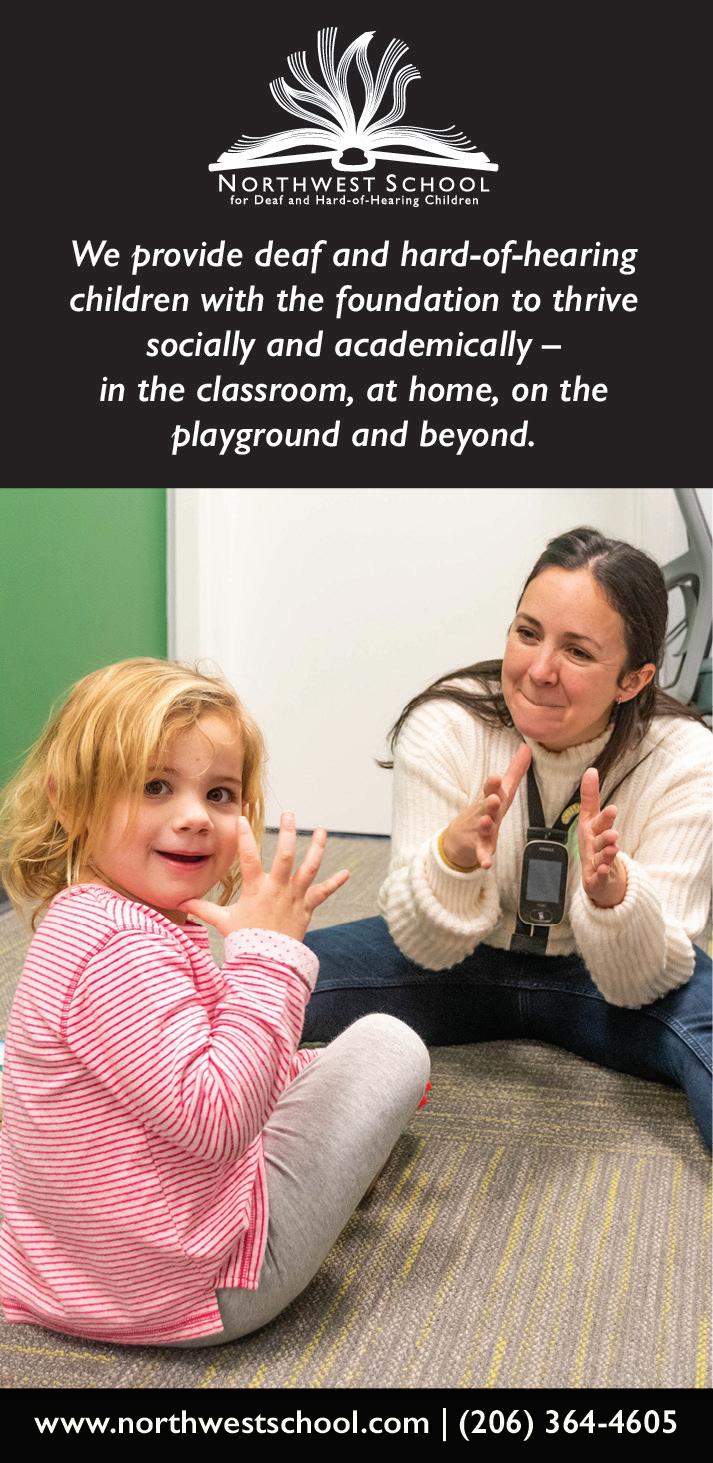
This is truly scary stuff. Freedom of thought may not be enshrined in the Constitution, but it’s the foundation for every other freedom that is. Every authoritarian regime that ever existed, from Hitler to Putin, used censorship as page one of its playbook. If you control which ideas are acceptable, you control how people perceive the world, and you can create any reality you want. These days, if you take that tactic and supercharge it with social media and artificial intelligence, there’s no limit to how far you can distort the truth.
I’ve always been an optimist about the future of humankind. Maybe it’s all those hours I spent as a kid watching “Star Trek,” and the enlightened, multi-racial, multi-species crew of the Enterprise following the Prime Directive from one galaxy to the next. But lately, that optimism has been sorely tested. Ray Bradbury saw this coming 70 years ago, and tried to warn us. His dystopia is now.
We have to find a way to protect our kids from people claiming to protect them. Our goal should be to teach our children how to think critically for themselves, and we can only do that if we expose them to the full richness of human experience and perspective, rather than deprive them. The banning of books and the ideas they contain is a fever, and the temperature in this country is rising fast. If we don’t do something soon, who knows what will burn down next?
ABOUT OUR COLUMNIST
Jeff Lee tries to live long and prosper, in Seattle, WA.

Sometimes after school or weekend play dates (or hangouts for older kids) are easy. Other times they are not as smooth as we would hope. Friendships also become more complicated as children get older and there is less parental involvement.
All of this is normal, all of this is natural. The challenge is: how can we support our children as they navigate friendships? As parents, we can help our kids learn to recognize the behaviors of a good friend, how to be a good friend and how to facilitate complicated relationships and bullies. The foundation starts in childhood. Let’s talk about how to help a child tell friend from foe.
Friendship and why it is important
The role of friendship and community changes as your child moves from being a newborn to a teenager. With small children, there is more focus on the nuclear family. You are more likely to have relationships with the parents of other small children. As your child grows, you may not know everyone in their classroom or on their sports team. Keeping the conversation open as to what friendship means, why good friendships are important to individuals and the community, and what good friend behaviors look like can help your child avoid pitfalls. What are the behaviors of a good friend?
Talk to your child about how friends should treat each other. It is helpful to focus on the behaviors rather than use the words good or bad. Have your child describe behaviors they would like to see in a friend. A young child may identify behaviors such as sharing, taking turns or saying kind words. An older child may identify good friend behaviors as being responsible, trustworthy, empathetic and thoughtful. Knowing what good friend behaviors look like forms a foundation. Children can reference back to that foundation if they are confused about whether someone is being nice to them, or if they need to course correct their own behavior.
Just as we talk about good friend behavior, it is equally important to identify behaviors that are not welcome. Obvious
negative behaviors such as name-calling, hitting, refusing to share and insulting are easy for children to name. Some behaviors can be more confusing. This can include uncomfortable jokes, dismissive or excluding behavior and negative nonverbal communication such as eye rolling. Children may have a hard time classifying this behavior and may not initially recognize it is unkind. Behavior that includes racist, sexist or intolerant comments needs to be called out as never acceptable under any circumstances.
Finally, behavior that leads to children feeling pressure to do something they would not normally do or pressure to conform can also lead to discomfort and unease. It can be helpful to talk with your child about these complicated behaviors. In general, if a child feels uncomfortable or feels bad about themselves after an interaction it is worth digging in to take a deeper look.
Bullying
Unfortunately, almost every child is the target of a bully at some time or another. Talking about how bullies behave in a general sense can help your child be prepared and recognize and describe bullying behavior. Bullies are almost always looking for a reaction. When talking to your child about bullying, you can give them three initial concrete actions to take. First, advise them to walk away. Second, if walking away is not enough, teach your child to clearly and loudly tell the bully to stop. Finally, if the bullying continues, it is time to involve a trusted
adult. Reminding your child that the bully is just one person, and that they have other friendships, can help them feel confident and grounded.
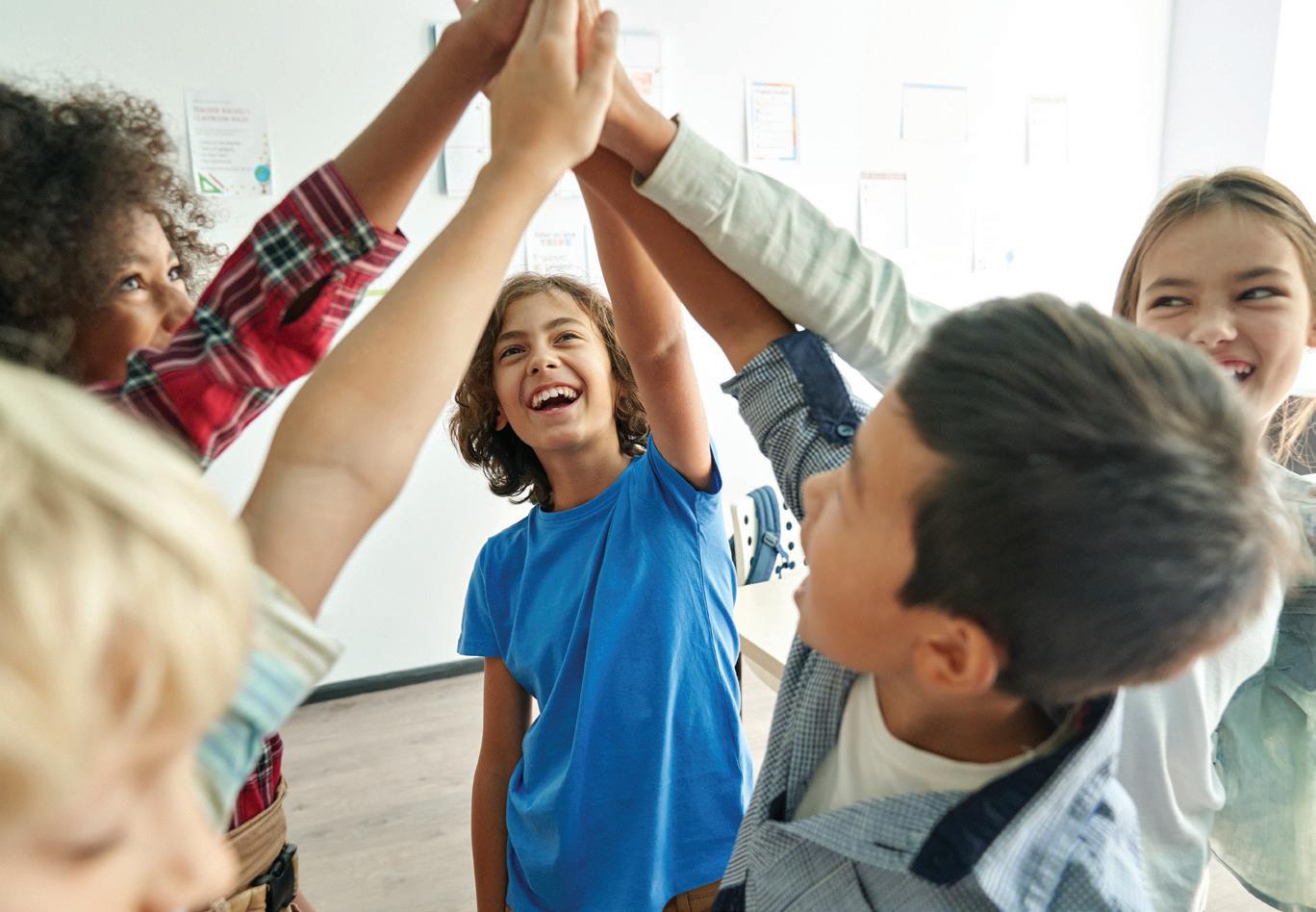
It is also perfectly okay to ask your kids, big or small, about their friendships. It is always best to find a time when they are receptive to conversation. Start with open ended, non-judgmental questions like, “What did you and your friend do today?” Most children don’t tell their parents everything. If your child is struggling with a friend’s behavior, let them know you are there for support, listen to the responses and acknowledge their feelings. This helps you avoid making assumptions and keeps the door open for future conversation.
Demonstrating what good friendships are like always helps too! Spending quality time with your children, listening to them and being emotionally open with them not only demonstrates what good relationships and good social skills are, but helps your child feel comfortable communicating with you when they do need support or to resolve a conflict.
ABOUT OUR COLUMNIST
Dr. Susanna Block, MD, MPH, is a pediatrician with Kaiser Permanente in Seattle and lives with her family in Queen Anne.

SPONSORED BY


Just outside Shelton, about 1.5 hours south of Seattle, the most unlikely residents are taking sanctuary in a quiet residential neighborhood: tigers, lynx, bobcats, cougars, the oldest snow leopard in the world. They roam the Wild Felid Advocacy Center, a 5-acre refuge in a cozy forest setting. The center currently has more than 40 wild cats in its care. Due to myriad circumstances, they can’t be returned to the wild. But you can reserve a spot to tour the facilities and watch these creatures show off their agility, strength, sharp teeth, and feral instincts. 3wildfelids.org —Jasmin
ThankachenEditor’s Note: The following article is excerpted from 52 Ways to Nature: Washington: Your Seasonal Guide to a Wilder Year by Lauren Braden (2022) with permission from the publisher Mountaineers Books.
Want to hunt for hidden treasure on your next hike? Okay, “treasure” might be too grandiose for what you’re likely to find in a geocache—think trinkets and doodads, action figures, beads, a coin of foreign currency, or a bit of poetry. A geocache is a hidden

collection of small, offbeat objects, usually in a box or jar, placed in a publicly accessible outdoor spot for the purpose of being found. You’ve walked by them, over them, and around them without even knowing they were there. They’re in your city parks. There’s a geocache midway across the
Tacoma Narrows Bridge, and on the summit of Mount Adams. People who hunt for them are geocachers, and they’re often wildly addicted to their sport.
When geocaching was the hot new hobby for hikers in the early 2000s, you needed some hefty navigational tools and knowhow— topographic maps, a compass, and for the gadget-obsessed, a pricey GPS unit. Nowadays, the gadgetry most of us carry in our pockets has everything you need to get started—a smartphone
Murals can offer city dwellers bold social commentary or an encounter with whimsy. Make a day of hunting down these five largescale murals located throughout Seattle.
Murals signed by “Henry” are colorful and cheerful displays of fantastical characters sure to make kids smile. Find the signature Hentry Sasquatch mural (one among many) in Ballard, outside Cookie’s Country Chicken. 1744 NW Market St, Seattle, WA 98107
2
Hop on a train, bus, or bike — or walk — to see some of the more than 60 different murals along SODO Track, a two-mile transit corridor that doubles as an urban art gallery. SODO Track spans Fifth Avenue South between Royal Brougham Way and Spokane Street. To find out what transit to catch and what you’ll see, go to 3sodotrack.com.
3
Stop at Crossroads Trading in the University District to find the snakes and serpent-like creatures created by artist Stevie Shao. University Way NE and NE 43rd Street
An iconic emblem of peace, the Martin Luther King Jr. mural at 2726 E Cherry St. was painted 27 years ago by James Crespinal and restored in 2022. It carries this message: “Darkness cannot drive out darkness; only light can do that. Hate cannot drive out hate; only love can do that.”
1 4 5
There’s a new mural on the walls of Big Fish Grill, facing Woodinville’s DeYoung Park. Here artist Will Schlough captures iconic elements that represent the city of Woodinville and its people.
—Jasmin Thankachen
with GPS capability (standard on modern cell phones), and a free app. Launch your geocaching adventures almost anywhere—from a neighborhood park to the backcountry. How to find a geocache
To find a cache, navigate to a specific set of GPS coordinates, then try to find the container hidden there. To do this, download the free Geocaching app (available for Android and iPhone). Create a login, and with geolocation enabled, touch the “map” icon, which displays a map with your current location in the middle plus locations of nearby geocaches, represented by green box icons. If you’re in a city, you might see these icons in parks, greenbelts, street easements, or on the grounds of a public library. In state parks and national forest lands, geocaches are found at trailheads, under downed
logs or behind boulders along hiking trails, sometimes even far into the backcountry.
Start by finding a geocache near where you live. When you reach the location, chances are, you won’t see the geocache container at first—because it’s hidden! Tap the map’s icon for that cache, and you’ll get a cryptic hint where to look. For example, “a thorny affair” might tell you to look near some blackberry brambles (ouch!). “Be like a troll” means to look under a footbridge. Click through to the description of the geocache for more hints. When you locate the cache, open it and sign the log (bring your own pen). On your app, click the “Log” icon and mark it as found—from now on, that cache will appear as a smiling face on your map. Each cache page has an activity section where you can post a note, upload a photo, and read other geocachers’ notes about their experience at that cache.
Wondering how all these caches got there? Geocachers
created them, and you can too once you’ve gotten the hang of finding them. Always get permission from the land manager or landowner to hide a new cache. When choosing a hiding place, don’t make it too easy or too challenging, and minimize impacts that geocachers will make on the landscape reaching the hidden treasure. Lastly, get a durable, waterproof container to house your cache, as these often remain in their hiding place for years.
If geocaching sparks joy, keep at it! Consider subscribing to the premium version of the Geocaching app—it opens up some fun challenges to reach caches that aren’t accessible in the free version, like puzzles and riddles, and includes a map layer with hiking trails. Where to go
Your neighborhood: Geocaching around your home turf gives you lots of excuses to take long walks outdoors. Gain a fresh new perspec-





A portion of the proceeds from each birth certificate benefits the Children’s Trust Fund of Washington, administered by the Washington State Department of Children, Youth & Families Strengthening Families Program.
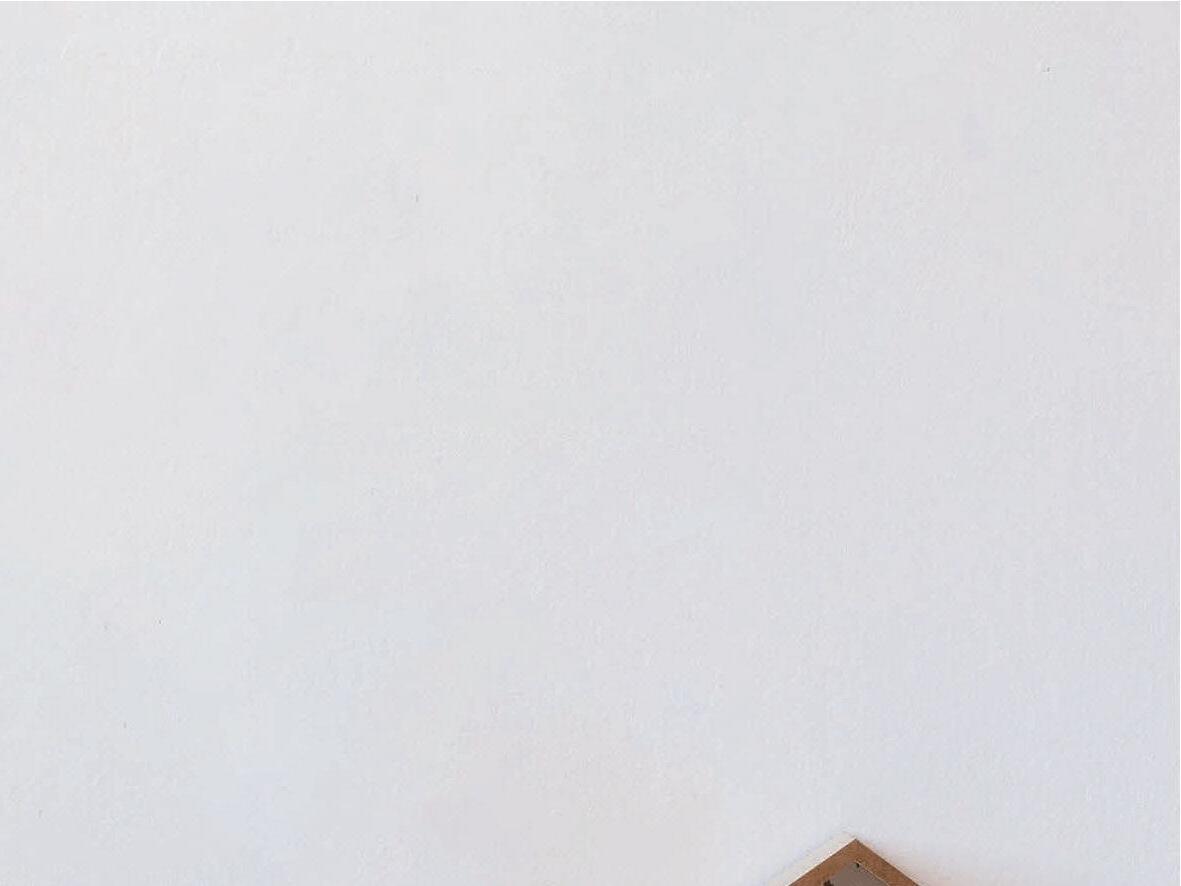
• This official birth certificate is personally signed by the Governor and State Registrar.


• Certificate is 8 1/2 x 11 and includes the name, date and place of birth, as well as the name and birthplace of the parent(s).

• Frameable keepsake.
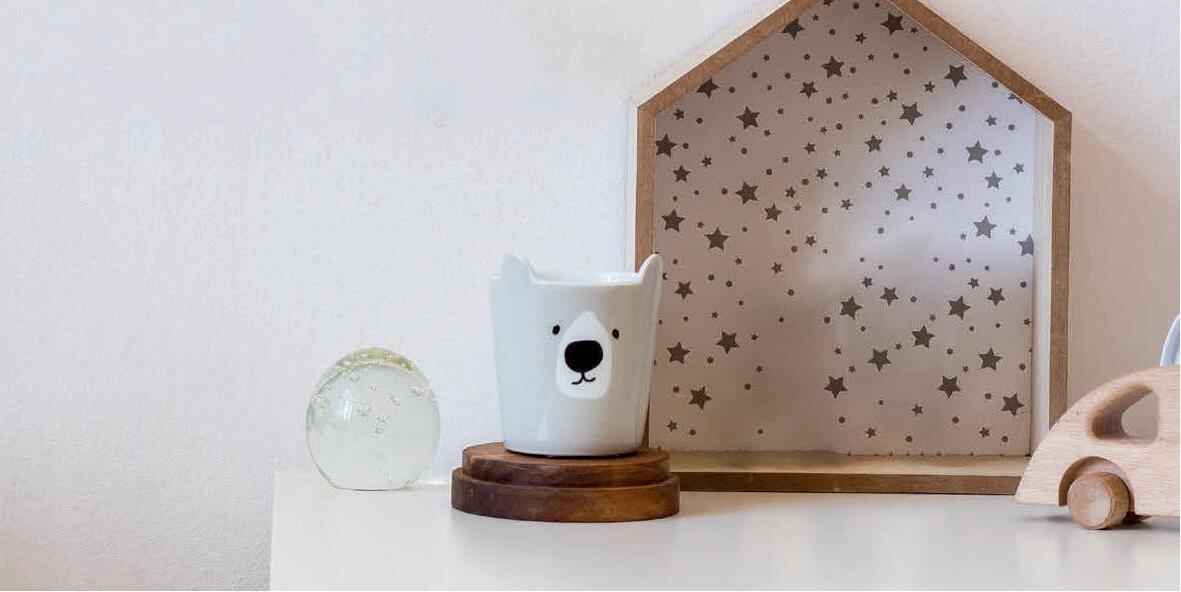
• For each $45 purchase of an Heirloom Birth Certificate, $20 is tax deductible.
To find out more information on Children’s Trust and child abuse prevention in Washington State visit: www.dcyf.wa.gov/about/governmentcommunity/community-engagement or visit the Department of Health to order your own Heirloom Birth Certificate.
DCYF FS_0010 (09-19)


tive on places you see every day, and notice cool features of your hood. Some urban parks are treasure troves—Point Defiance Park in Tacoma has more than thirty geocaches, and the Chuckanut Mountain area in Bellingham has more than one hundred. Some cities, including Seattle, discourage and may even remove geocaches from city parks if the locations aren’t approved in advance.
Your favorite hikes: Add a fun twist to your day hikes and a novel motivation to push on another mile. Most well-trodden trails outside of national parks and designated wilderness will have a cache or two—some host many more. In the Columbia Gorge, hiking trails in the Catherine Creek Recreation Area hide a few dozen geocaches. The Rattlesnake Ledges Trail outside North Bend has five caches.
Forest service roads: What a brilliant idea to line long Forest Service roads with caches every tenth of a mile—it makes a fun day of caching by mountain bike. Popular roads for this are the Little Quilcene Road into the eastern slope of the Olympics and the Suiattle River Road in the Cascades out of Darrington. Learn more
The Washington State Geocaching Association advocates for geocachers, working with parks departments to create beneficial relationships between land managers and the geocaching community. The Geocaching app’s headquarters is in Seattle’s Fremont neighborhood (837 N 34th Street, Suite 300), and they offer tours.
Lauren Braden is an outdoors and travel writer in Seattle, and founded the local trip-planning website Northwest TripFinder. She is passionate about connecting Pacific Northwesterners to close-to-home getaways and outdoor adventures that nurture the soul. Follow Lauren online at nwtripfinder.com or on Twitter @nwtripfinder.

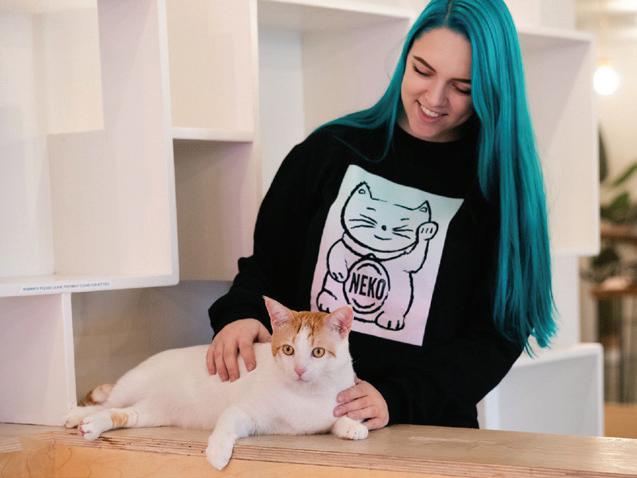
There are lots of things that begin with the letter ‘C’ in the culinary world: coffee, cookies, chocolate . . . But cats? Yes! For families not interested in bringing a pet home, cat cafes offer all the psychological benefits of animal contact without any fuss. Kids itching for a kitty? These cafes are a great way to meet and hang out with potential pets. In Seattle, Neko: A Cat Cafe goes the extra mile on the cafe side. Introduce your kids to Japanese strawberry milk paired with cat-shaped cookie sandwiches or Japanese mochi. Okazu pan, a savory bread stuffed with BBQ pulled pork, beef curry or vegetables is usually a hit with kids. 519 E Pine Street. Open 10 a.m. - 9:45 p.m. Monday-Friday, 9 a.m. - 9:45 p.m. Saturdays and Sundays. Reservations required: 3nekocatcafe.com/reservations
—Cheryl Murfin
for them.”
on a trail themselves, they knew how to recognize huckleberries, fiddleheads, golden chanterelles, razor clams, and all sorts of other wonderful wild foods.”
Fall is mushroom season
“Kids are incredibly good at foraging,” says Ashley Rodriguez, an award-winning food writer and photographer based in Seattle. “They are much closer to the ground. It is like this treasure hunt
Rodriguez and Langdon Cook, a Seattle-based author, lecturer, and expert on hunting for wild edibles, are huge proponents of family foraging. Rodriguez and Cook have foraged with their kids since they were young toddlers.
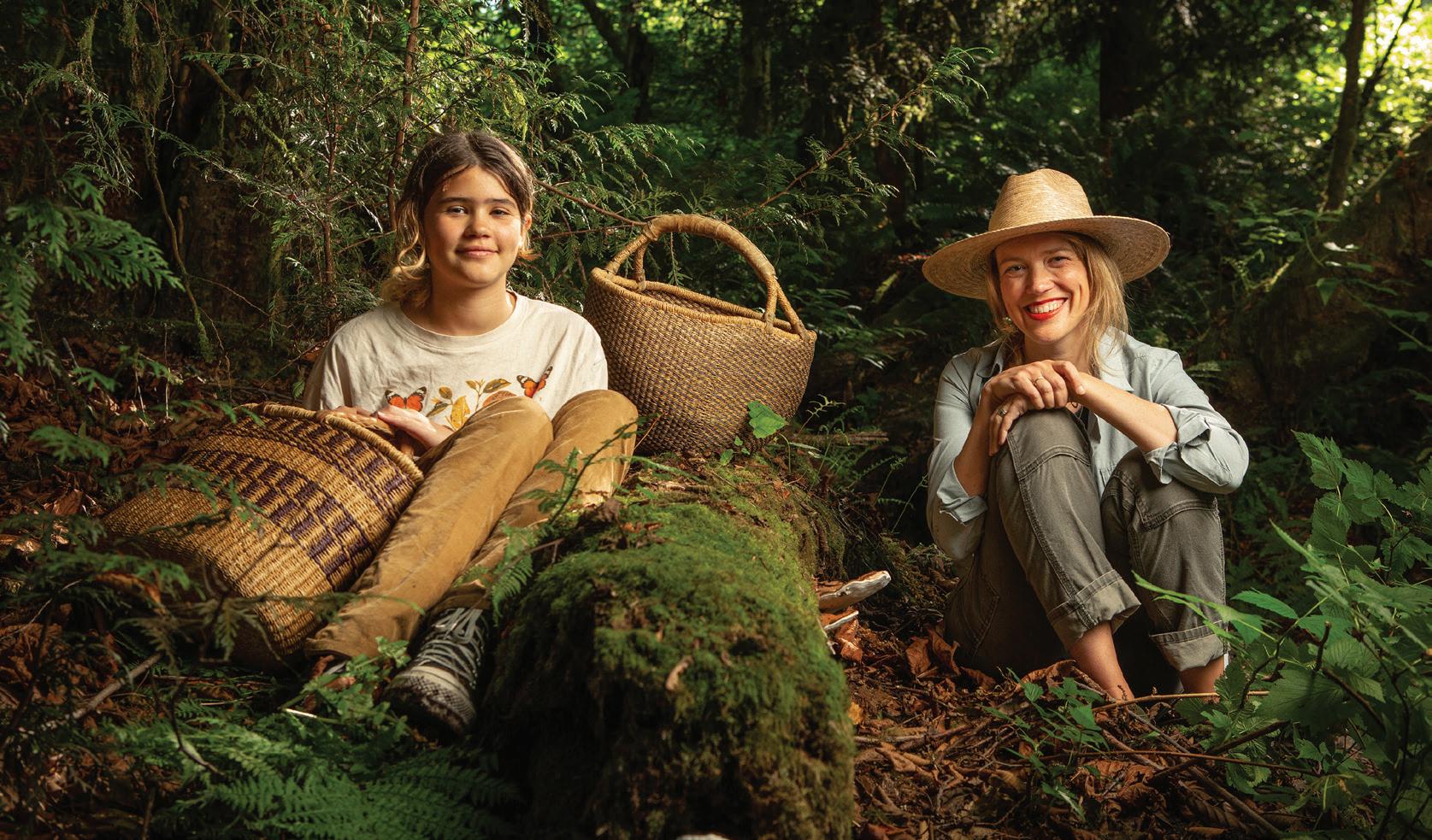
“Start kids early. We were hiking with our kids in baby backpacks from the get-go,” says Cook. “By the time they could walk
Rodriguez says fall “is like a free-for-all of all the Pacific Northwest mushrooms. [It’s] mushroom season. If we get some late summer rains, you can start finding chanterelles in August.”
Don’t know where to start?
The Puget Sound Mycological Society is an excellent resource CONTINUED ON
Dining out with kids can be a challenge — between researching places, checking menus for dishes your kids will eat, getting everyone in the car and managing manners, it can feel like running a gauntlet to treat the family to a restaurant meal. Then there’s the cost. Especially for a larger family, places where kids eat for free or for significantly less than adults means the difference between going out and staying in. Restaurants differ widely in their offerings – some places offer daily discounts for little ones, while others offer freebies and discounts only on specific days of the week or with other purchases. But if you’re looking to stretch your family dine-out dollars, our list of “18 Puget Sound restaurants where kids eat cheap or free” is sure to help. Find it online at 3seattleschild.com/ kids-eat-free —Seattle’s Child staff
Foraging for wild food is a thrill for grown-ups, but for kids, it can be genuinely fascinating and high motivation for getting out in nature.
for new foragers. Starting in late September they offer the Hildegard Hendrickson ID Clinic (and other classes) to help hunters identify wild mushrooms. The clinic runs Mondays from 4 to 7 p.m. at the UW Center for Urban Horticulture.
Of course, there’s more to fall foraging than mushrooms. In Washington, hunters forage for dandelion greens, huckleberries, lingonberries, rosehips, nettles, and other plants between September and November. Many fall edibles live in neighborhood park ravines, although it is technically illegal to forage in Seattle parks. Consider using parks to practice identifying plants.
“I think there’s so much to learn from just going out and finding them and just appreciating,” Rodriguez says. She and Cook point out that foraging is year-round fun.
“The seasons can be looked at like this: spring is the time for wild
greens; summer is the fruit and berry harvest; and fall is when we see the highest diversity of edible fungi,” says Cook. “As for winter, that’s a good time to harvest shellfish like clams and oysters.”
Teaching foraging safety
Rodriguez suggests creating a hunting list or map for kids, to help them identify foods in season while educating them on how to forage safely. She stresses that having appropriate caution around wild foods while growing an appreciation for them is important.
“I know for me growing up, it was like, ‘Don’t touch that mushroom. Don’t touch that,’” says Rodriguez. It’s better, she says, to teach kids a healthy wariness while sparking curiosity and awareness. Rodriguez’s own appreciation for the mycelium began in childhood. And in October 2024, that passion will play out in a soulful, whimsical field guide to mushrooms, published by Sasquatch Books.
Suggestions for young foragers
Wild food hunding starts with
The Golden Rule of Foraging:
“Never eat anything from the wild without 100 percent certainty of its identification,” says Cook, who teaches foraging classes for adults and kids, including one at Olympic Penninsula Fungi Festival. His book, “The Mushroom Hunters,” is now out in paperback. While it’s not a mushroom foraging guide, it inspires a love of mushrooms.

Rule two: Prepare before foraging, just as you would when going out for a hike or on a camping adventure.
“Bring the hiker’s ‘ten essen-
tials’ when venturing into the outdoors, including food, water, rain gear, first aid, and so on,” says Cook. “And if going off-trail, learn to use a map and compass. Staying found in the woods is an important skill!”
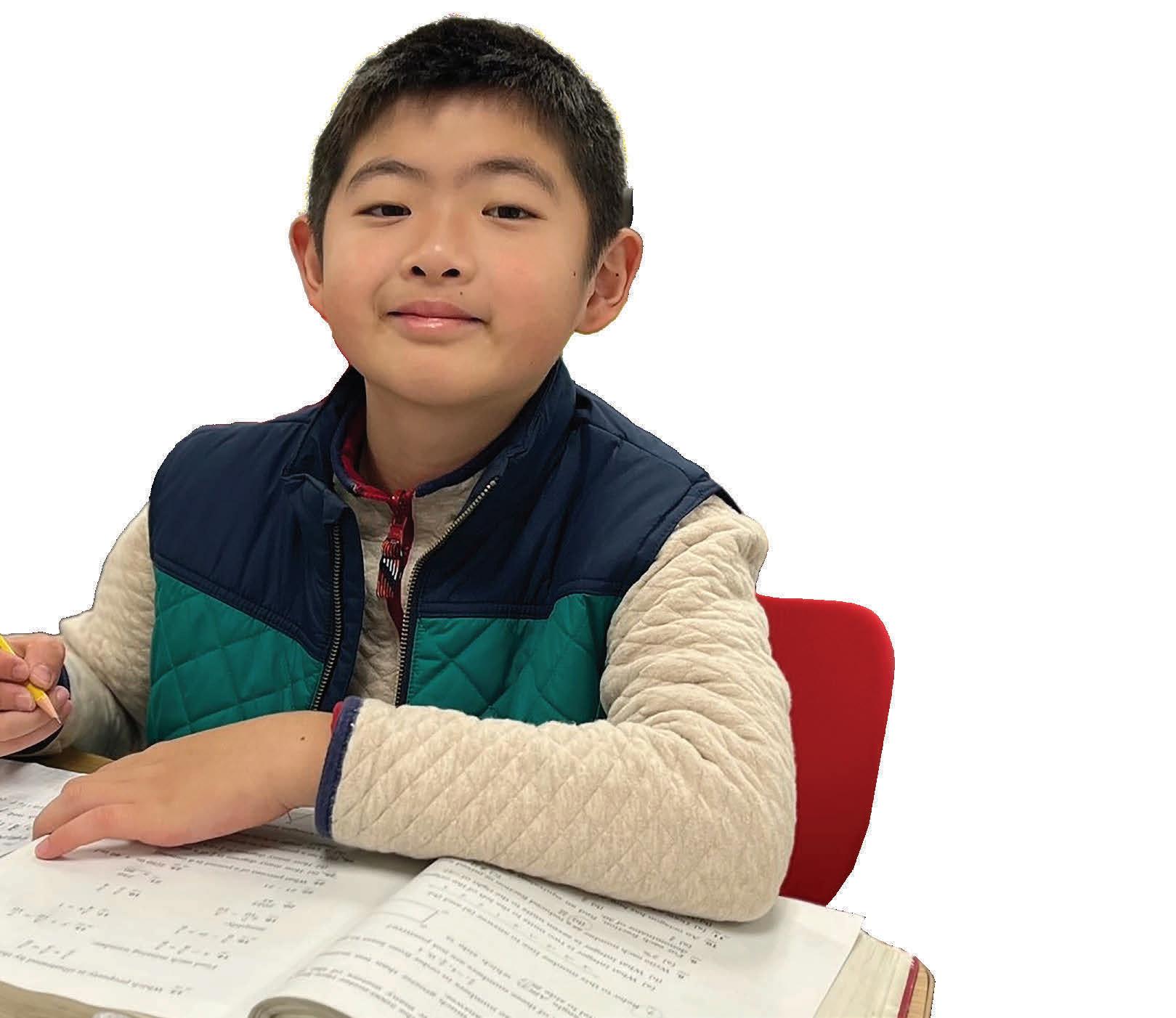
The benefits of foraging with kids are many.
“Kids learn that food doesn’t just come from a grocery store— it’s all around us! Like planting and tending a vegetable garden at home, foraging teaches kids that healthy and delicious food grows in nature,” says Cook.
Foraging is also a great way to get in sync with nature and learn the value of clean air, water, and open space.
“Foraging requires direct engagement with the landscape. Foragers need to pay attention to their surroundings, learning much about the ecology of their habitat along the way,” says Cook. “And like a treasure hunt, it’s an exciting activity that can lead to a nourishing meal.”
Discover a private school where intellectual curiosity drives student success, where interdisciplinary instruction meets experiential learning, and where students are inspired to learn at the highest international levels.
roosterhaus.org
Seattle libraries need teen volunteers spl.org/about-us/ support-us/volunteer
Our stories are all different, but everyone can relate. Perhaps you were admiring the treetops and not watching the path. You felt it immediately through the sole of your shoe, your step a little softer than it should have been, a slight slip as the realization hit . . . you got poo-shoed.
It’s a mess, an inconvenience, a black mark on humanity in general, and a problem Lori Kothe — founder of Poogooder — is working to solve.
Kothe isn’t just looking for help picking up after her own pup; she doesn’t even have a dog. She isn’t interested in why pet owners sometimes don’t
pick up after their animals — or why some, weirdly, bag up and then leave it in someone else’s driveway. She simply recognized an environmental issue and is focused on a solution — one that involves and relies on a growing network of like-minded people, adults and kids alike.
It Began with a Book
Kothe published “Oh, Poo! A Cautionary Tale” in 2020. Kothe wrote the illustrated children’s book after talks with neighbors
and friends about their frustrations dealing with left-behind poop.
Kothe, a parent of two, wanted to create something with a call to action.
“As parents, a lot of our lessons to our kids come down to, ‘we are all in this together, and we can all have an impact, even if it is a small action,’” she says. In contrast, “Oh Poo!” is about learning why cleaning up after your pet is essential.
Then another idea started to form. Perhaps picking up poo could be a community effort. That thinking led Kothe to the logical next step: providing poop bags and bag collection bins to neighborhoods committed to properly disposing dog waste and stewarding their bins.
She created a beta bin with poop bags and placed it in the public space in front of her own yard.
The positive feedback was substantial and immediate. Her neighbors appreciated fewer stinky surprises on the lawns and sidewalks in her area. When she discovered a dollar left on the bin lid in support of her effort, she realized people might be willing to support the program on a larger scale.
Far beyond a single poo
As she developed the Poogooder program, Kothe gained a better understanding of the far-reaching impact of pet waste on the environment. Fecal matter left on lawns and sidewalks eventually makes its way into the watershed, local lakes, and Puget Sound. Occasionally, beaches and swim areas are forced to
>

close to the public due to elevated levels of poop pollution, especially during summer.



Last year, the King County Department of Public Health contacted Kothe, offering to partner with and support Poogooder’s efforts. Kothe and a few volunteers staffed booths at farmers’ markets and other events to inform and educate families on the importance of pitching in.
“It is everyone’s problem,” Kothe says, “and it only perpetuates if we don’t do something about it. Together we can all keep our neighborhoods cleaner and our shorelines open.”
Become a steward
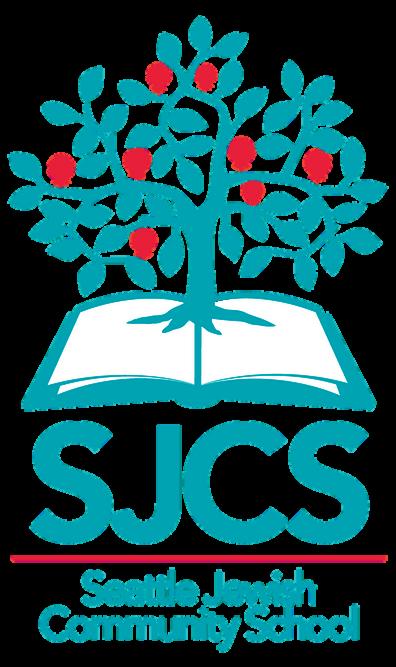

Since that first bin went up in her yard, more than 100 bins have been installed throughout West Seattle. As Kothe expected, the Poogooder community is thriving.
For West Seattleites, becoming a steward for a bin is easy. The containers are provided free of charge – delivered by Kothe and her now teenage son. They are clearly labeled, including a QR code to access more project information and donate. Stewards place the bin in their yard or parking strip, monitor them, and empty the bin when needed.
The program’s “bin buddies” care for one of the bins in public parks around West Seattle or assist a steward with their bin. As Kothe puts it, “You don’t have to be a steward to be part of the solution; you just have to be willing to step up so no one has to step in it.”
If your family lives outside of West Seattle, stay tuned. Kothe is working on securing funding to allow Poogooder to spread beyond West Seattle.
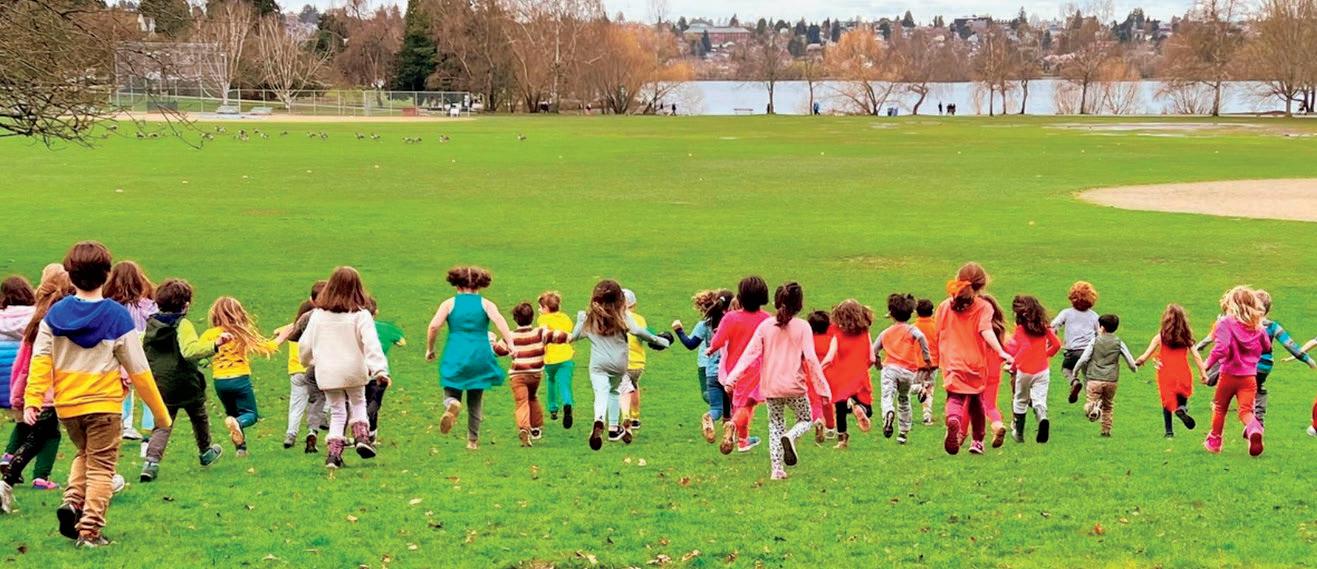
For now, however, her advice is to start where you are, how you can: always bring an extra bag on your walks.
“Before you get mad when you see dog poo on the ground, consider what the solution can be and what you can do,” she says. “We are all in this together to make a difference.”
Are you interested in joining the Poogooder program? Fill out the online form to get started.
 by CHERYL MURFIN
by CHERYL MURFIN
What specifically can your family do to fight climate change? Quite a lot, according to leading climate scientist Heidi Roop, Ph.D.
In a new book released by Seattle-based Sasquatch Books, Roop provides a long list of actions that individuals — adults and kids alike — can take to reduce carbon emissions and otherwise protect the planet. Note, “The Climate Action Handbook: A Visual Guide to 100 Climate Solutions for Everyone” is a parent read, not a book geared toward young kids.
However, school-aged children and youth exposed to climate change discussions will likely benefit from Roop’s clear, easy-to-understand explanations of the crisis and the simple, compelling graphics. Most will also understand Roop’s
explanations of her suggested 100 actions to fight climate change and why they matter. What does that list look like?
There are numerous home actions – installing solar panels, for example. Conducting online shopping with intention and consolidating packages when possible is easy. But the category where families might most easily start is food.
Roop encourages people to decrease meat consumption, move to non-dairy milk, eschew plastic water bottles (and plastic in general), and enjoy chocolate responsibly.
Everyone in the family should “turn away from fast fashion” – clothes with a short life span – given that the textile industry is a significant polluter. Also on the list: teach climate change in the classroom; talk about climate change with friends, family, and kids; encourage youth climate activism; vote; compost and otherwise cut down on food waste; teach teens to drive mindfully; and consider diapers carefully and with your local environment in mind. (272 pages, $24.95)
Vote: Your voice is important when a school levy is on the ballot. Why? Because districts rely on voterapproved levies to bridge the gap between state funding and the actual cost of meeting the needs of all students. To learn more about levies, visit 3educationvoters.org.
Volunteer: School volunteers make a big difference to students, whether they are in the classroom or not. Trying to figure out where to start? Join the PTA at your child’s school and volunteer at school events. Want to impact a whole state of students? Check out Washington State PTA. 3wastatepta.org
Donate class supplies: Teachers often pay for needed extra supplies out of pocket rather than go without. Before shopping, ask your child’s teachers what supplies they need. What else do your local schools need? Call school offices to find out. —Seattle’s Child Staff

SJCS.net
7217 Woodlawn Ave NE., Seattle 98115 (206) 522-5212 admissions@sjcs.net
Grades served: K-5
Seattle Jewish Community School (SJCS) welcomes families to an inclusive K–5 educational community in Green Lake. We combine Jewish intellectual heritage with contemporary insights into learning and growth, promoting excellence while nurturing children’s curiosity, confidence, and kindness. We seek to make a positive difference in our world, championing social justice and the dignity of difference.
What kids love...
• Warm environment and a sense of belonging
• Teachers and sta who know them personally
• The best playground in Seattle—Green Lake Park!
What parents love...
• Excellence in learning
• Collaborative, flexible cohort model
• Grounding in Jewish values to raise good people
• Emphasis on socialemotional development
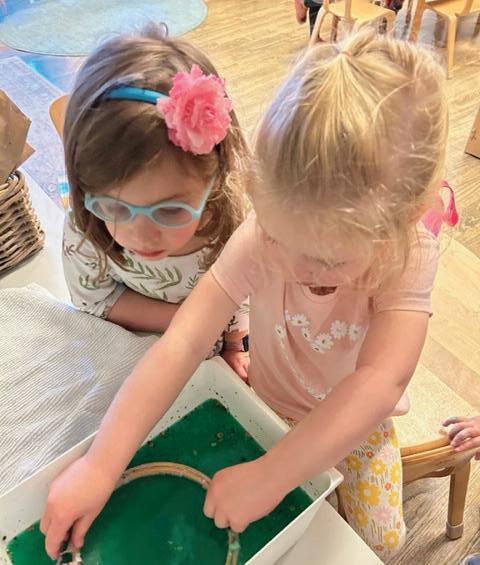

pacificfirstmontessori.com
1420 5th Ave #300, Seattle 98101 3rd floor of the City Centre/US Bank Tower Building
@pacificfirstmontessori
Our infant, toddler, and preschool classrooms are influenced by the Montessori philosophy. A Montessori classroom is a unique environment in which children have the freedom to choose their work and set their own pace within an engaging, well organized, sequenced curriculum. Our classrooms have all the materials necessary for ongoing learning at every stage.
What kids love...
Kids love the calm environment that o ers so many fun choices to work with and play each day. And our big outdoor play space!
What parents love...
Parents love that their children are cared for in a warm and loving environment where they are excited to come to school each day.
aw.org
827 N Tacoma Ave, Tacoma 98403 (253) 272-2216
admission@aw.org
Grades Preschool (age 3+) through 12
Possibilities are endless at Annie Wright Schools, where each student’s unique strengths, learning styles, and passions are known and celebrated. Annie Wright Lower and Middle Schools offer co-ed programs in Preschool through Grade 8, while separate Upper Schools for boys and girls offer day and 5- or 7-day boarding options in Grades 9 through 12.
Founded in 1884, Annie Wright Schools are nestled in the beautiful North End neighborhood of Tacoma, Washington. Annie Wright is proud to be an International Baccalaureate World School, delivering IB programs in every division. We offer rich, thoughtful and internationally-recognized programs that welcome students from around the country and world.
Vibrant, joyful, globally-minded community
Opportunities to travel and study abroad
Wide range of arts, athletics, and co-curricular activities
charleswright.org/visit
7723 Chambers Creek Road W, Tacoma 98467 (253) 620-8373
admissions@charleswright.org
Preschool - 12th grade
At Charles Wright Academy, an independent school in Tacoma, students discover their passions through a breadth of active, joyful learning opportunities both inside and outside the classroom. Preschool-Grade 12 students are nurtured and challenged to develop the character, creativity and skills to successfully navigate the future with confidence. We are an inclusive community valuing integrity, respect, compassion, perseverance and excellence. We offer bus service to serve families in South King, Pierce, Thurston, and Kitsap counties.
Small class size where teachers know their students
Head start on college credits earned in International Baccalaureate courses
Safe and nurturing, student-centered environment

Active, experiential and joyful learning that includes art, music, science, world languages and athletics for all students.
A respectful, supportive community of teachers and students who love to learn.
Small classes led by talented and caring faculty. Academic challenge and support at every stage.
Students grow as real-world problem solvers and innovators to thrive in the 21st century.

epiphanyschool.org
3611 E Denny Way, Seattle 98122 206-720-7663
admission@epiphanyschool.org
Pre-K – 5
An independent, non-parochial school, Epiphany School is known for excellent academics, strong social-emotional learning and its warm, welcoming community. Our talented faculty weave the school’s core values of respect, responsibility and resourcefulness into every grade, helping every child grow in character, independence and leadership.
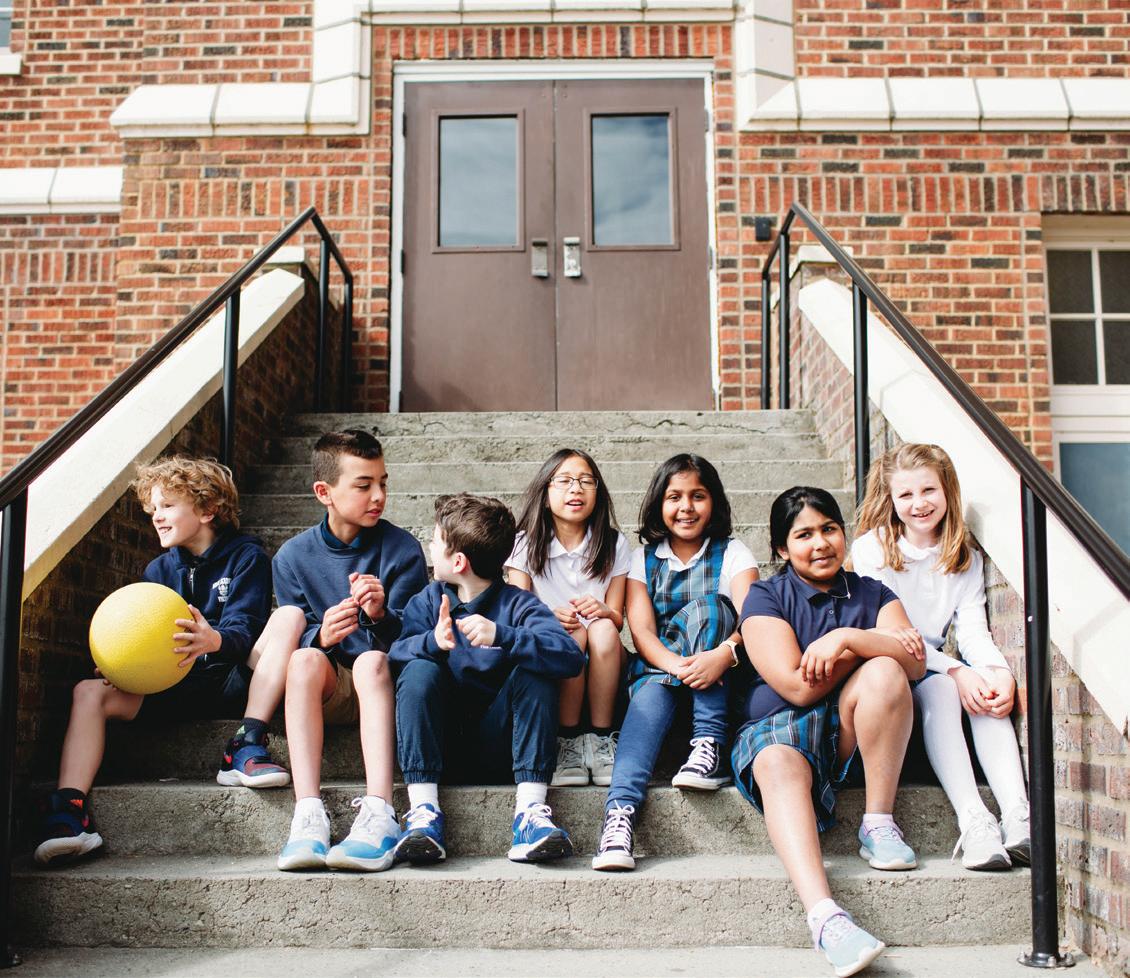
Our Mission: Epiphany School challenges and supports all students to become confident, curious and courageous learners through innovative teaching in a caring and inclusive environment.
OPEN HOUSE November 16, 6 p.m.
The BEST teachers and friends!
Beautiful, safe campus with lots of time to learn, play and run outside
A unique school culture and supportive learning community encourages students to stretch, take risks and embrace challenges.
thevilla.org
5001 NE 50th St., Seattle, WA 98105 206-527-9388
admission@thevilla.org
PreK - 8th grade
We are intentionally diverse and inclusive, and our dedicated staff challenges and supports our students through differentiated educational experiences, a focus on student wellness, and inspired curiosity. Villa Academy is the only independent school in the city of Seattle that offers this dedication to the holistic development of children: mind, body, and spirit. Dedicated to dynamic, inquiry-based learning as the path to academic excellence, we simultaneously tend to whole-person growth and integrated health, informed by compelling research on the powerful influence of nature, spirituality, and social-emotional intelligence on academic thriving. Our empowered students become stewards of their lives, caretakers of their mental and social wellbeing, and guardians of the environment. Villa stands in commitment to the transformative power of our Cabrinian tradition of “education of the heart.”

Exploring and discovering the wonders of our campus forest, trails, gardens, and Lake Washington waterfront
Competitive sports, a state-of-the-art multipurpose athletic field, and multiple playgrounds
Art, music, PE, and world language built into a daily schedule
Rich academic curriculum seamlessly integrated with social-emotional learning
High-quality before- and after-school care, clubs, and camps
Robust opportunities for parent involvement and volunteering
Small classes and highly educated and supportive faculty
Outstanding, inquiry-based academics that feature STEM, project-based learning, and outdoor education
A connected community that facilitates self-reflection and whole-child growth
Commitment to diversity, equity, inclusion, justice, and belonging
They’ve been called the “backbone of public education,” the “glue” that holds classrooms and schools together, and “the lifeblood of the school community.” But more and more, the term used to describe education paraprofessionals – also known in public schools as paraeducators, teaching assistants, instructional assistants, or simply paras — is “unsung heroes.”
Leah, the West Seattle mom of a soon-to-be middle schooler, illlustrates the hero part:
Late last June, instructional assistant Steven Alvarez got a message from the mother of a former student.
“In 4th and 5th grades, we worked really hard together on behavior and academics that he really struggled with,” Alvarez says. Now, the boy is headed to high school — and according to his mom, he would be marching in a parade to celebrate the transition. Alvarez, who was named the Washington 2020 Educational Support Person of the Year, didn’t think twice. He showed up on the parade route with a “Congratulations!” sign to cheer his former student on.
“He stops and stares at me like, ‘I can’t place you, but I know you,’” says Alvarez, a crack in his voice. “I say ‘It’s Mr. Alvarez!’ His eyes got so big. He’s trying to be this cool 8th-grade kid with his friends, right? But he comes up to me and shakes my hand.”
The student beamed to his friends: ‘This is someone that helped me,’” says Alvarez. “I teared up right there in the street. I was his teacher. I helped him level up. This is why I do what I do.”
Alvarez, who refers to the students assigned to his care as “my students,” has
“We didn’t think he’d ever be in regular classrooms alongside all the other kids,” says Leah of her son. To her delight, though, her son spent most of 5th and 6th not in self-contained special education classrooms but instead in general education classrooms — with an instructional assistant Leah described as a superhero: “She was always looking for signs of agitation or anxiety and constantly swooping in with new ways to connect with him and connect him to what was happening in class.”
a lot of memories that illustrate why he left a more lucrative research job to become a Seattle Public Schools paraeducator 17 years ago — and never looked back. There’s the bike-to-school dad who thanked him for greeting his child every day. And the former student he watched stand up from his walker to receive his high school diploma. “I was a sopping mess,” Alvarez says.
Such moments are why Alvarez says “I look forward to going to school every single day.”
With his bold red spectacles and Converse shoes (he changes shoe color daily), Alvarez is known for his high energy and enthusiasm as he helps students face challenges head-on. He’s also known for his calm in a crisis.
A colleague once said to him “Steven, when a kid is so upset that they’re just yelling at you and screaming and throwing things, you’re just so stoic.” Not sure of a compliment, Alvarez realized that what the colleague saw as stoic was in fact one of Alvarez’s primary teaching tools: modeling.
“When a kid is dysregulated, I’m purposefully breathing in and out,” he explains.
“It’s my job to stay really calm and relaxed, to show them what they need to be doing [to get regulated] and that they can do it.” Recently he’s noticed more of his fellow educators mimicking the “square breathing” technique before entering the classroom.
“It absolutely works,” Alvarez says.
Any day during the school year, you might see Alvarez and a student “walking for happiness” around the school. You wouldn’t know it, but a few minutes earlier, that student felt agitated or out of control.
“We talk about anything and everything besides what is upsetting them. We talk about my cats, we talk about their pets, we talk about Legos, whatever,” Alvarez says. “Five minutes later, things have deesca-
And what of the unsung part?
As a group, paras tend to be self-effacing, behind-the-scenes educators. “They don’t get enough recognition for the important role they play in our education system,” says Mahamoud Gaayte, an SPS Somali student-and-family advocate.
What paraeducators will say, however, is that their work is becoming increasingly demanding. As the number of children with difficult behaviors or disabilities increases and as more teachers decide to leave education, paras say they often do more than their job descriptions call for and work more time than they get paid for to ensure students’ needs are met.
What is a para?
The paraprofessional field covers a wide variety of positions within any given district. There are more than 30 paraprofessional roles in Seattle Public Schools (SPS), the largest school district in Washington. The majority of paras in Washington’s 306 school districts work as special education assistants, instructional assistants, bilingual education assistants and family support workers. What
lated.”
“Once you get them out of the classroom and chat with them about anything else, you can break the cycle,” he says. “Then we can have that conversation and work on academics. I can tell them, ‘My friend, I’m here to help you. You’re not alone.”
Not long from now Alvarez will leave instructional assistanting and move into the special education teacher’s seat. He is currently working on his teaching certification and plans to complete a Master’s in Education.
While torn about ending a role that has been fulfilling in countless ways, Alvarez says becoming a certified teacher is the “natural progression, at least for me.” After years of telling kids they have what it takes to ‘level up,’ he says, “I’ve got to practice what I preach!”
He has a tip for those interested in teaching: Become an instructional assistant first.
“Get inside the classroom and see if this is what you want to do,” he says. “I believe in the apprentice model, and that is what’s missing. You could be learning as you go, see how it all really works.
“And,” says Alvarez. “I think [teacher] retention would be there if they knew what they were getting into.”
Alvarez says he has no regrets about leaving research for education all those years ago. In many ways, he’s still a researcher. He’s always looking for ways – new or tried-and-true – to help students reach their full potential in the classroom and beyond.
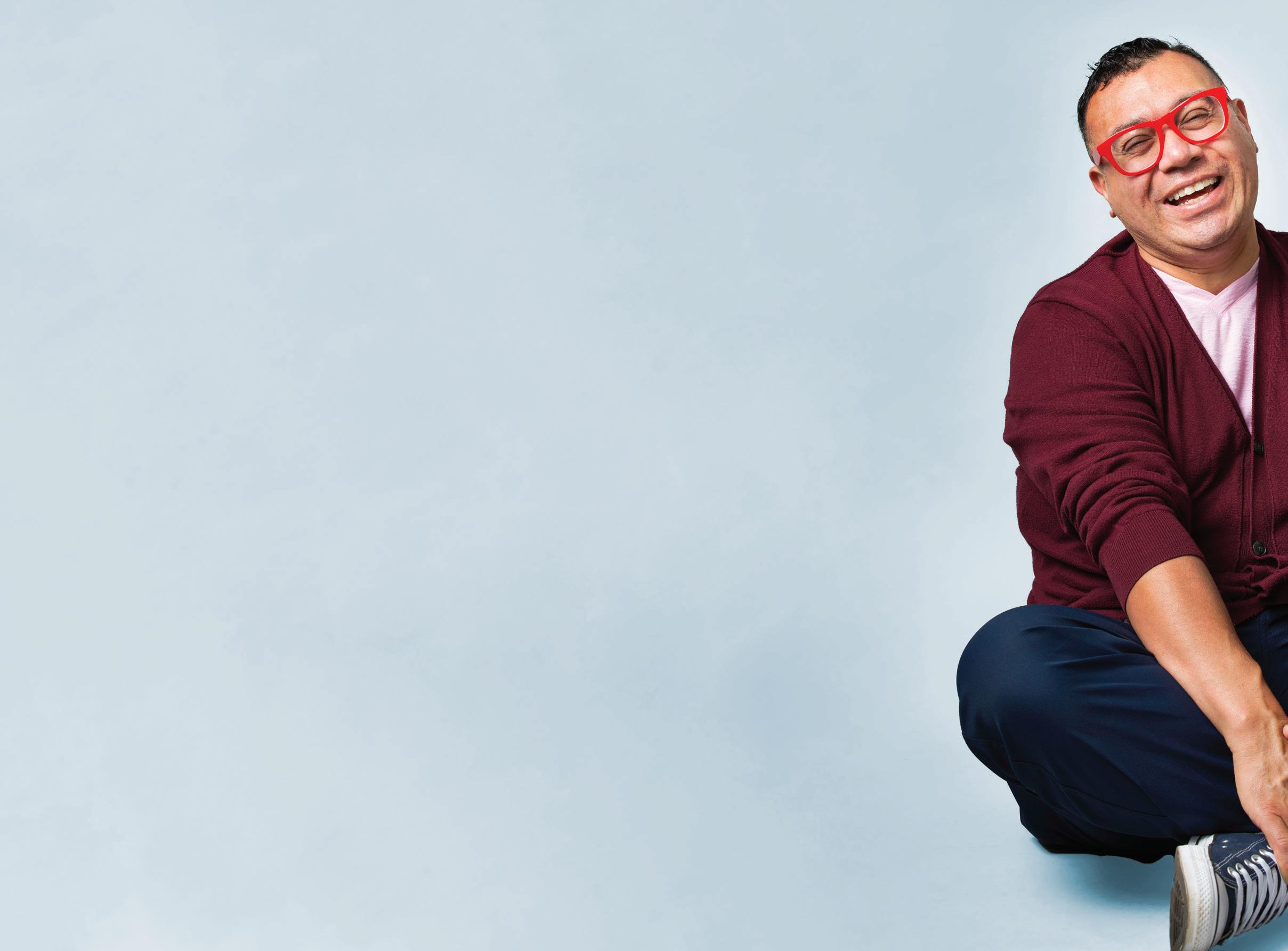
No matter what you call them, these educators are key to student success
by
MURFIN / photographs by JOSHUA HUSTON
they have in common is this: all help students with Individualized Education Programs (IEPs) or other special plans due to disability, English language difficulties, or other concerns that make them eligible for support services. They are integral special education programs and essential in general education classrooms where the majority of kids with IEPs learn.
Kathryn Roll, a paraeducator at Seattle’s Whittier Elementary, says paras are dogged problem-solvers: “We are accessibility experts. Understanding how to make classrooms accessible to all students is what our job is all about. Our job is to help kids access school to the best of their ability.” She points out that paras work hand-in-hand with the myriad staff involved in a child’s education plan.
“We take in all this information, know the IEP and behavioral plans, evaluate the child and the situation in front of us, and constantly finesse how we support each child,” Roll says.
Says veteran special education teacher
In her 28 years as a paraprofessional, Marla Rasmussen has worked in three different school districts. She’s helped children with special needs learn to write their names, to speak, to walk. Yet in those three decades, she has never earned a livable wage.
“You need a second income,” she says, “either from a partner or another job.”
To make ends meet when her kids were younger, Marla worked as many as three jobs at once. “One day a week, I cleaned a house for an extra $25. I’ve mowed lawns to cover rent. I did inventory at Costco.”
In her current role as the union president for paraprofessional leadership within the Seattle Education Association, Marla says, “My push is for people to understand that this is a career choice.” She seeks to ensure that paraprofessionals are compensated fairly and that they receive training to help them thrive at work.
“Without paraprofessionals in our schools, they won’t function. Teachers wouldn’t be able to teach. Students wouldn’t be able to learn. It’s a profession that needs to be honored. We’re all educators.”
In fact, a 2016 study showed just how much impact teaching assistants have. Not only did their presence in schools help academically – boosting math and reading scores, especially among students of color – but they also improved behavior, reducing both absentee rates and tardiness.
Alisha Rasmussen followed in her mother’s footsteps and works as a paraprofessional at a junior high in the Puyallup School District. At $27 per hour, her salary is on the higher end
of the pay scale (pay is variable depending on education, experience and the requirements of the position).
Even as Alisha supports her mother’s endeavors to improve the profession, she is training to become a teacher. “I love being a para, but I also would love to generate change,” Alisha Rasmussen says. In her experience, while paraprofessionals can create change in a classroom or with individual students, they “face roadblocks” when making systemic changes.
Alisha has pushed to bring more trauma-informed practices into the classrooms and increase the use of assistive technology to promote student independence.
“Our voices aren’t heard at the district level. We get a lot of, ‘Oh, why don’t you check in with your teacher about that,’” she says. “I would love to see a joint effort between paraprofessionals and classroom teachers to advocate and create change, since paraprofessionals are too often overlooked in a hierarchical system that claims to see us as equals in education.”
Over the years, the Rasmussens have also observed an increase in behavioral issues among students, which affects paraprofessionals in terms of both physical safety and burnout.

“We’re talking students who are easily escalated, throwing chairs, hurting other people, hurting themselves,” says Marla. “It is not unusual for our staff to be punched in the face.” She adds that staff being harmed was rare when she first started working. “Now, it’s an everyday occurrence.”
Despite the significant difficulties that come with the role, both mother and daughter say that the bonds they’ve formed with their students make the job worthwhile.

Once, Marla was asked to support a high schooler who was selectively mute.
“I was supposed to be his voice in the classroom,” she says. As she worked with him, however, she discovered that all he needed was time. When asked a question, his face remained blank, so peers and teachers assumed that he couldn’t respond or didn’t understand.
But Marla noticed that if given a few minutes to process, “His whole face would change. It would just light up. Then he would tell you about his interests and his passions. I wasn’t there to speak for him, but to make sure others gave him that space.” For the Rasmussens, being a paraprofessional is about education, yes, but also about transformation. That highschooler? Marla smiles. “People saw him as a new person.”
Meet Otis online at 3 seattleschild.com/Otis-Golden
Angela Burke, who works in Edmonds School District: “They’re critical, and I really couldn’t do a good job without supportive paraeducators.”
Paraprofessionals by the numbers
Approximately 27,000 paraprofessionals are working in Washington public schools alongside nearly 71,000 classroom teachers. Together these educators serve more than a million students in 295 school districts and 16 charter schools.
According to the state superintendent’s office, about 143,000 eligible students in Washington State receive special education and related services. SPS has 7,500-8,000 students whose disabilities or other challenges require an IEP (compared to about 3,500 each in Kent School District and Lake Washington School District). Last year some 1,400 paras supported students in Seattle alongside SPS teachers and other certified staff.
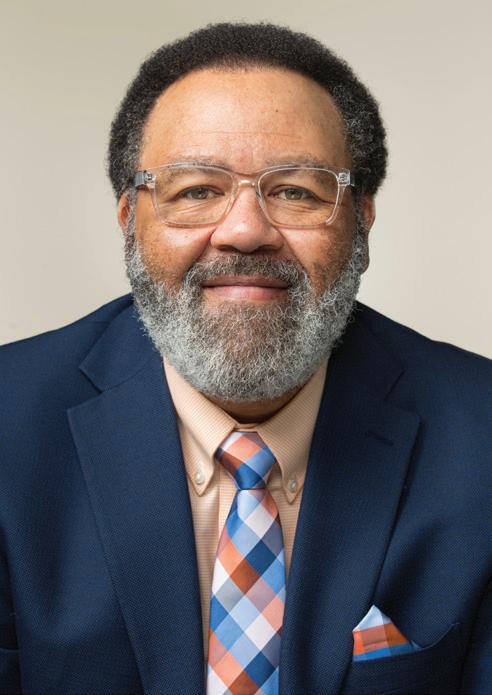
“All students have a right to participate in general education classrooms alongside their peers,” says Seattle Public Schools Communications Specialist Tina Riss Christiansen.
Paras, says Roll, ensure students are able
to exercise that right.
Supporting all students
Paraeducators also help a lot of kids without special plans or needs.
“Inside the classroom we want to make our students (with IEPs) as comfortable as possible,” explains Steven Alvarez, who’s been a special education assistant for nearly two decades and now works at Thornton Creek Elementary in Seattle. “That often means helping other students in the class. Then my student doesn’t feel they are alone struggling. In the end, I think we help a lot more kids than we realize.”
A tough challenge: Recruiting and retaining paras
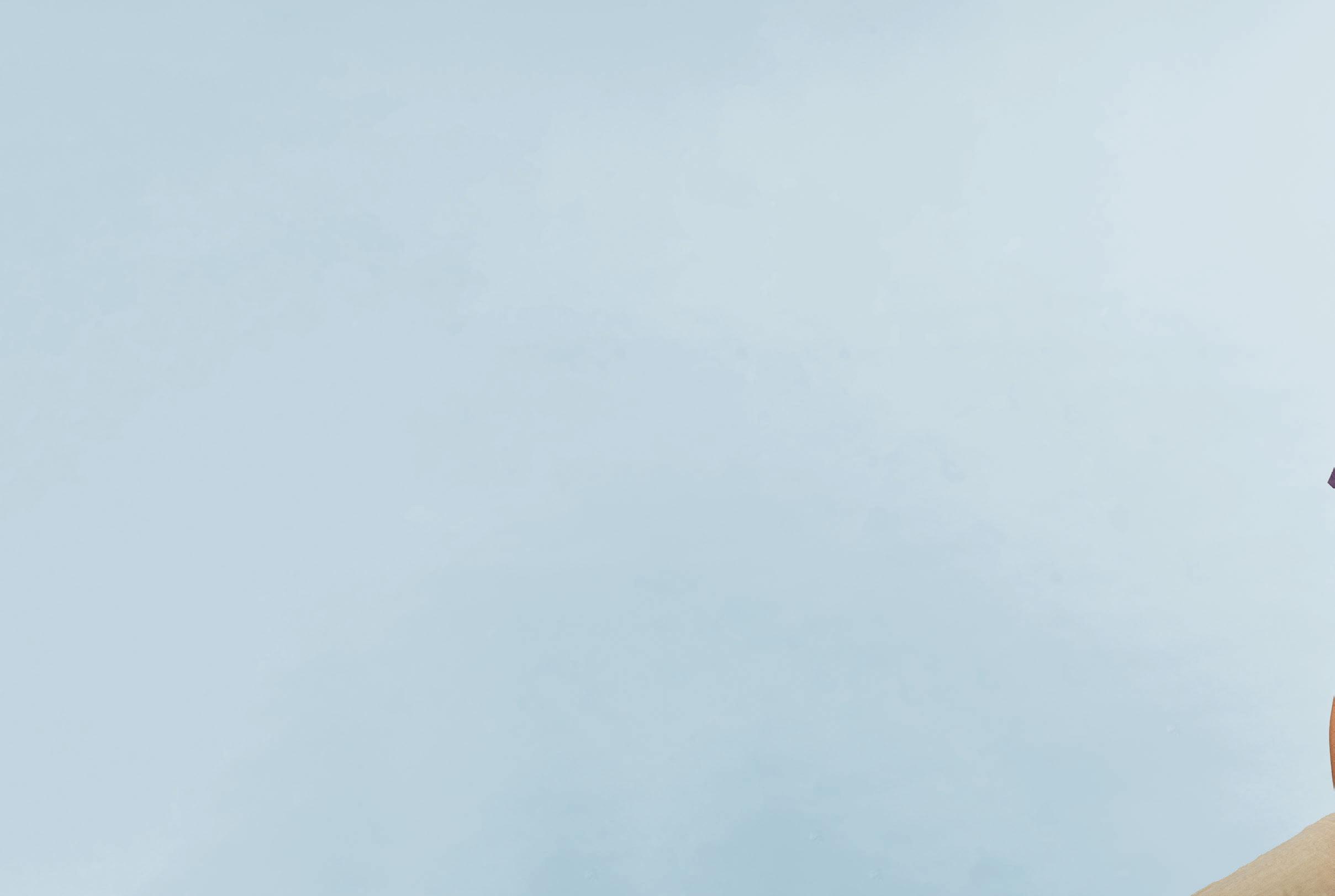
A CALDER brief published in February found that teacher attrition and turnover rates are now at historic highs in Washington State. In response, many districts, including Seattle, have developed programs to encourage paraeducators to obtain teacher certification. And in 2019, in response to para requests for more training, the state implemented a paraeducator certificate program. The program aims to ensure paras have the skills they need to work in sometimes fraught situations – for example, with students with high behavioral regulation needs – and provide support equitably.
with Scrabble tiles, or magnet letters. Let’s find ways that you can do this without hitting that frustration wall.”
with one child.”
by CHERYL MURFINKathleen Roll remembers the day a young boy — we’ll call him Ben —was brought to her in tears.
As a special education assistant at Whittier Elementary in Seattle, one of Roll’s main jobs is to assess what a struggling child needs and develop a way to provide it.
“Ben was in our program, but he was not on my schedule, and somebody walked him up to me by the hand. He was just sobbing uncontrollably.” Roll hadn’t interacted with the boy before.
“I don’t know why he’s crying. Nobody knows why he’s crying,” she recalls. “The person who brought him to me just said, ‘He’s in your program. Do your thing.’”
She started to do her thing — to understand Ben’s needs and address them. “I’m just throwing stuff against the wall to see what sticks. I’m trying blowing bubbles, breathing exercises, and funny jokes. And then, eventually, I start counting 1, 2, 3 . . . I get to about 17 and realize he has started
counting with me. I am thinking fast — he has stopped crying. We’re counting. We’re getting into the 20s. We’re getting to the 30s; I drop out, and he counts all the way to 100.”
Ben is just one example of why Roll loves her work as a paraeducator.
“I learned several things that day,” says Roll. “One is that the predictability and the pattern were really helpful for Ben. Two, he could count high. And three, I had his attention. We went on and did a little talking; we tried a little drawing, which devolved into him throwing a bunch of things and becoming very upset.
“And that’s when I realized, Oh! The fine motor skills were not there, which was very frustrating for this child. Over the course of the year, he spent more and more time on my schedule. The fine motor was frustrating him, and I just loved finding ways for him to express himself. I knew he was smart and I wanted him to feel smart. I’d say ‘You can spell
Roll resists the reference to paraeducators as the “unsung heroes” of school, although her description of the job sounds heroic. She teaches kids strategies to succeed at school, works with teachers on how a child can best be present in class, works with administrators, nurses, therapists and pathologists to facilitate learning plans, evaluates kids and sleuths out ways to help them learn and grow.
Roll came to the field already well-versed in the workings of a classroom. She was a high school teacher in Chicago, worked with the juvenile court and community schools in San Diego as a long-term substitute. As a teacher, she felt frustrated in being unable to spend more time with kids who needed extra help. She stepped back from education.
“I knew if I could work with those kids, they could make more progress,” Roll says. “They were really struggling, but you could never spend a sufficient amount of time with them because there were always so many other kids in the room.”
When a special education teacher and friend at Whittier Elementary suggested becoming a paraeducator, it clicked: “I thought, oh my gosh, that’s perfect. That’s exactly what I like to do— to really be able to work
Roll says the biggest challenge of her work is not the kids but the staffing.
“When we are low on staff, we aren’t able to put in as much of the important preventative work; we are putting out fires,” she says. “To do inclusion right, more paraprofessionals, not fewer, are needed.”
Still, she says she has never had a dull day as a paraeducator.
“When we are appropriately staffed and working with a plan in place, it is hard to imagine a more rewarding job,” she says. “I get to spend each day with fun, curious, intelligent, energetic, and silly kids. Every child I have met has passions and personality traits that are engaging and charming, and joyful.”
She cherishes the memories of watching Ben progress from being shy, frustrated, and overstimulated to being more confident, open, and communicative.
“He was intensely interesting,” Roll says. It wasn’t perfect but, “there were just those kinds of lovely moments where I witnessed a child enjoying learning because their needs were being considered and we were finding ways that he could shine.”
What does shining look like to Roll? “I remember most the first time when he played with a friend on the playground. I was like, ‘Oh my god, look at that! That’s friendship, and what a beautiful, beautiful thing.’”
“It is our job to make sure that the students start out with the best day and end with the best day. We like to say we start the day for the teachers, because if we do a good job in the mornings and the afternoons when the kids see the teachers, their day is a lot easier.”
OTIS GOLDEN III
Paraprofessional, Seattle Public Schools
Hard to imagine a more rewarding job
KATHLEEN ROLL
Unfortunately, recruiting and retaining paraeducators remains a challenge, say local education association representatives and a separate CALDER report released in April. That report found that the paraeducator attrition rate doubled between 2009 and 2021.
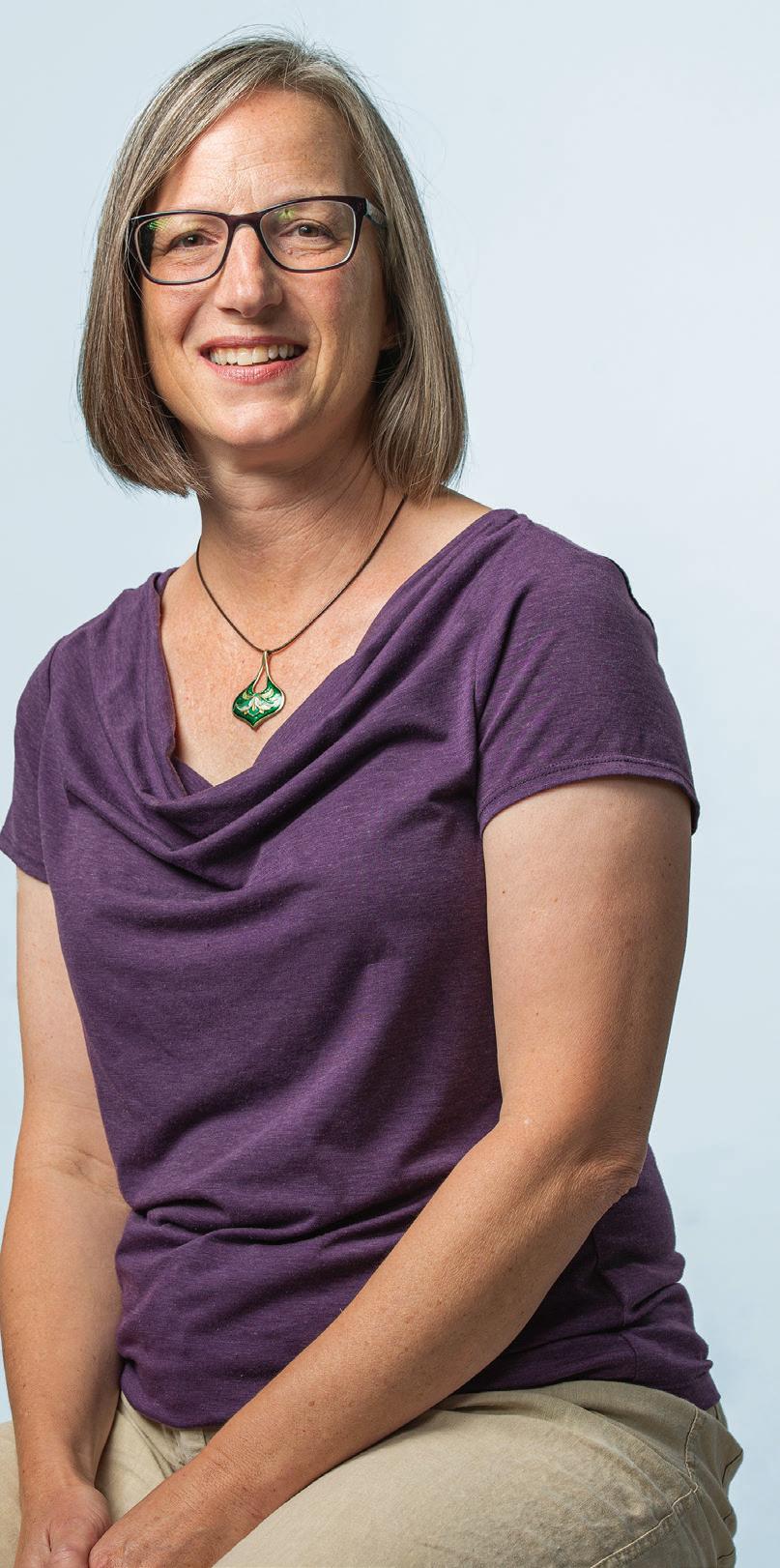





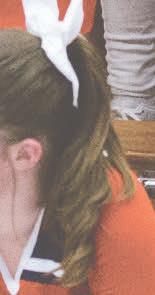




“Our findings clearly point to a crisis


CONTINUED ON NEXT PAGE >
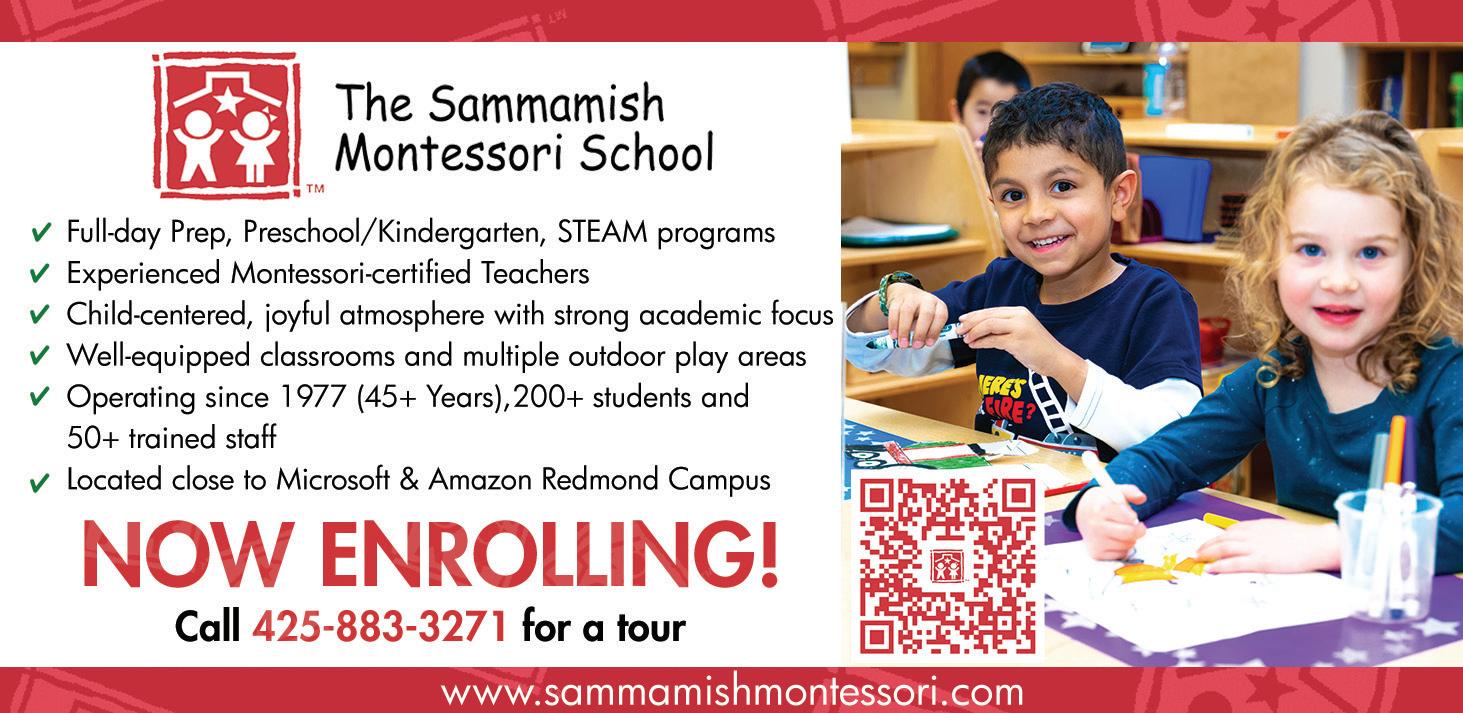
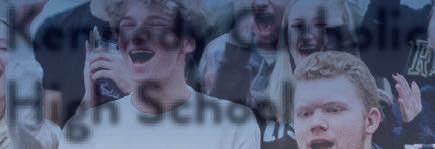
Carrie Cain, a former classroom teacher, says she’s been surprised by the expanse of the paraeducator role: “I was unaware of a lot of things, including things that kids needed. I’m not faulting teachers at all. They have so many kids. But paras fill that gap. They’re the safety net.”
CARRIE CAIN
Paraeducator, Seattle Public Schools
Ronnue McThomas has a mission—several missions, in fact. As a Corrections Education Associate at Seattle Public School’s Interagency Alternative High School, he aims to get often-reluctant students to attend and stay in school.

The secret to his succes with students deemed “challenging?” McThomas is willing to share his own experiences: “I’ve been those kids,” McThomas says. When McThomas was in high school, he and his brother were sure they would be famous. The music they made played on Seattle’s radio stations alongside talents like Sir Mix-a-Lot. School took a backseat to their dream of the big time, but McThomas completed high school coursework. Even so, he almost didn’t graduate
due to an abysmal senior-year attendance record.
Only by the skin of his teeth, under threat by his mother, and the grace of his biology teacher—who allowed McThomas to make up a semester’s worth of work in two weeks—did he walk across that graduation stage. He remembers that day as one of triumph over tragedy.
When things didn’t go as hoped with music, McThomas moved from Seattle to Atlanta. He owned a business and continued making music. But when the economy tanked during the 2008 recession, McThomas’s business flagged. He returned to Seattle and briefly experienced homelessness.
Eventually, McThomas returned to school to earn his associate degree, a move he credits with turning his life around and leading him into
At Evergreen Academy Montessori, the magic happens in our prepared environment, where trained, caring teachers observe each child, then give an individualized lesson, with an irresistible material, at just the right moment.

Geography, taught right, is a wonderful way of stoking a child’s imagination and a great opportunity for crossdisciplinary learning - for making art and practicing fine motor skills, for reading tied to content learning, for storytelling and report writing.

Learn
the classroom. He’s currently working to complete his bachelor’s in early childhood education and plans to get a master’s degree all in the hope of creating positive change in the education system.
One thing he’d change is the length of time spent teaching.
“We live in a soundbite society. Kids are on Snapchat and TikTok. Their attention spans have gotten shorter. People are processing information faster, and we spend way too long expecting kids to listen to a teacher for an hour,” McThomas says.
In college, McThomas learned a better way to teach: spend 15 minutes presenting new material, followed by 10 minutes off for kids to process that material.
McThomas is also interested in the impact of movement on learning. “People in general learn better when they’re moving,” he says. “I’d like to see how combining physical activity with teaching traditional subjects might help kids learn better.”
One of the main battles he sees facing teachers is the need to compete with students’ cellphone use in class.
“If I had my way, the legislature would pass a law so parents could limit phones to only calling or texting parents during school hours, in
.
case of emergency,” he says. He recognizes the potential for danger in schools and the escalation of school gun violence. Phones are a necessary evil, but he firmly believes limitations would improve kids’ engagement in the classroom.
McThomas’s passion for making music has never waned. Independent music awards have recognized several of his recordings, and his Spotify channel has over a million listeners. His style combines R&B, funk, and hip-hop and is uniquely McThomas. Depending on which of his tracks you listen to—including those on his latest 2023 release titled R&B is Not Dead—you might think you’re hearing Eric B. & Rakim back in the day, or perhaps Bizarre, or maybe John Legend, or any number of artists whose names and music are standard fare on the radio. It’s impossible to confine McThomas, whose artist name is Ronnue, to any one genre.
“You might find me writing country, old school, rap—I love it all. It just depends on what’s in my mind,” he says.
When he’s not getting kids to school or doing his own schoolwork, you’ll find McThomas in the recording studio, playing gigs from Seattle to Atlanta, or listening to his fashion sense. In music, clothing, and life, McThomas’s style is all his own. And that — their uniqueness — is what he sees in his students. In sharing his own story, he inspires them not to give up on school, but to use it to advance their dreams.


in paraeducator retention,” the authors concluded.


The new training opportunities are a step in the right direction, says Marla Rassmusen, a longtime paraprofessional with Seattle Public Schools and the president of the paraprofessional board at the Seattle Education Association. But she, Alvarez, Roll and other paraeducators maintain that what’s needed is higher pay, benefits, and job security. Low paraeducator pay was one of the issues that led union members to the picket line last September.
“Many of us end up working two or three jobs, particularly in cities like Seattle, where rent is so high,” Rasmussen says. They do not receive extra pay for the physical risks of the job or the extra pay that special education certified teachers get when IEP teacher-student ratios exceed the standard. “Even so, they love the students,” Rasmussen says. “We want successes to continue. If we leave, that might not happen.”
Seattle Public Schools’ Christiansen says SPS “cannot respond to statements made by union representatives or dis-
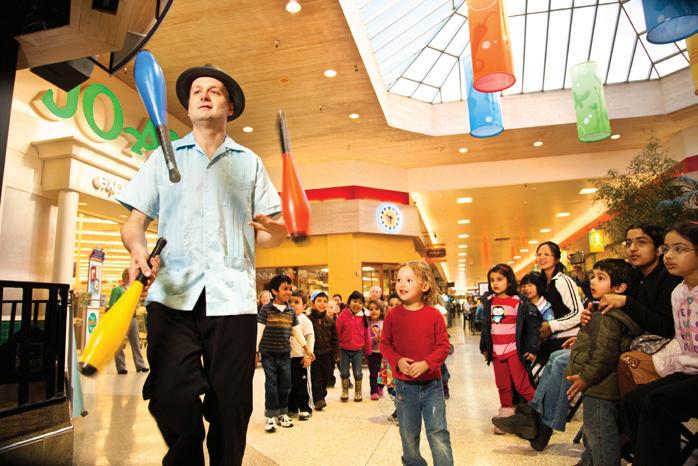

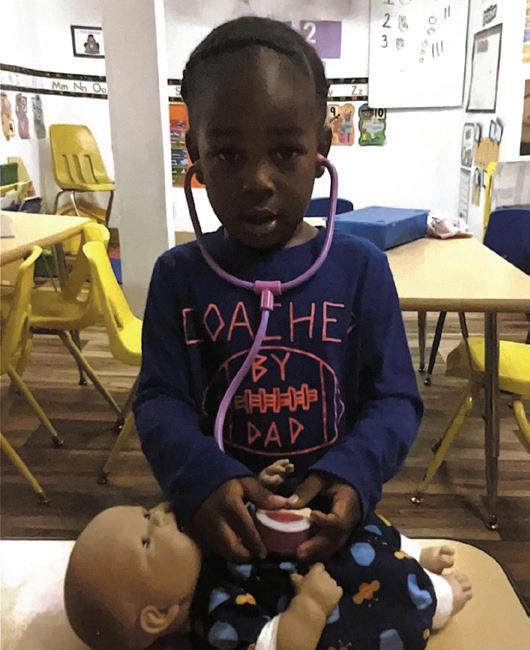

 Edmondson-Kemp Owner/Director/ECE Practitioner
Edmondson-Kemp Owner/Director/ECE Practitioner
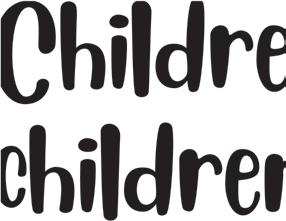


cussions that were part of negotiations with our labor partners.” The same is true of other school districts contacted regarding union comments about paraprofessional pay concerns.
SPS did confirm pay rates for the district. The starting pay range for a new paraprofessional in Seattle, depending on their role, is between $23 and $38 per hour. Paras who are education assistants and bilingual instruction assistants in Seattle start at around $29 an hour. By comparison, minimum wage in Seattle is currently $18.69. According to Salary. com the average K-12 paraeducator salary across Washington State is $24,787 as of July 25, 2023, but typically ranges between $20,697 and $30,230.
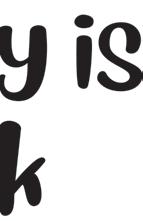
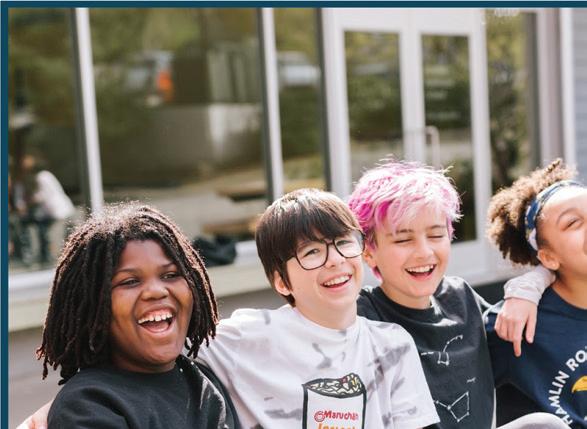
Barrier: Will I have a job next year?
Rasmussen, who also works with paraprofessional leaders across Washington, says job security is another concern when recruiting people into the field. Due to a seniority-based system negotiated in collective bargaining, new and non-certified district staff are often the first to go when budget cuts are made.
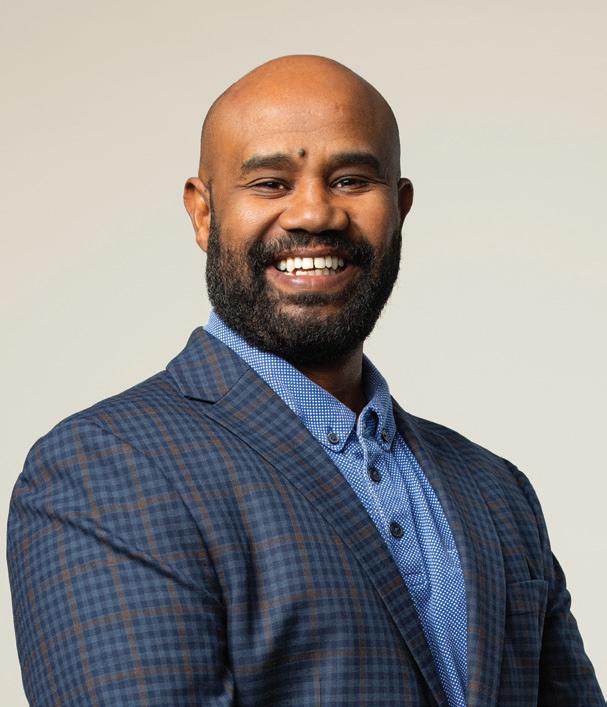


“When there are budget cuts, mostly due to lack of adequate funding by the state, we do end up having to eliminate positions,” SPS’s Christiansen says. “The effects are district-wide and not just targeted to one employee group. When positions are eliminated, employees in them have the right to bump others with
MAHAMOUD GAAYTE Multilingual family advocate, Seattle Public Schools Meethelp. Kids need to say their names the way their families [do]—don’t be afraid to correct people’s pronunciation until they learn your name.”
less seniority.”
But, says Rassmussen,“That’s where we lose many of our paraeducators, particularly some of our really strong educators who just graduated from college. They can’t wait for the end of summer to see if they get hired again. It’s a gamble.” The welcome committee








When a child with a disability or other challenge that requires an IEP steps off the bus each day, a paraeducator is waiting for them.

“I’m the first one who sees my students every day when they get out of the car or off the bus. I greet each one and look to see how they are coming in — are they coming in hot? Is their parent giving me a thumbs up or a thumbs down or sideways? I start thinking about how to help that child through the day right there,” says Alvarez.
Paraeducators are often the most-trusted school touchstones for the kids they serve.
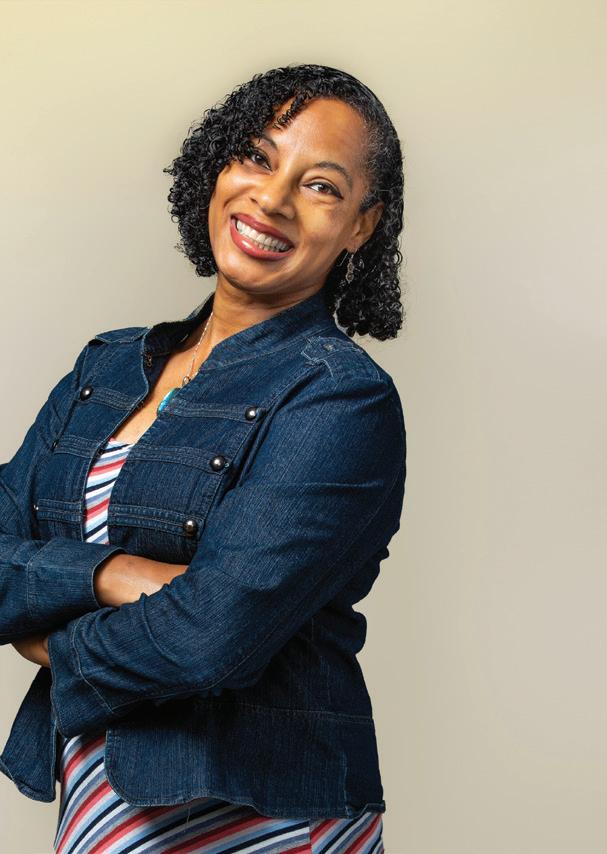

“We are the ones students connect with, that they will confide in,” Rochelle Greenwell, a Kent School District paraeducator and president of the Kent Association of Paraeducators, says of the spectrum of care paras provide. “We are also the ones that will change the diaper, that will spoon feed the medically fragile students that need extra and additional support to thrive in a public classroom setting.”
Equally important, Greenwell says, “we bridge the gaps, mend the holes and uplift students that feel downtrodden.”

Leah, the West Seattle mom, says her son once felt that way. For years when he got frustrated, he banged his head and called himself “stupid.”
“His assistant changed that. She lifted him up. She was patient, she found ways to help him succeed and shine. She is forever our hero — and his.”

capable of great things makes it worthwhile. I enjoy encouraging each one, even when they say they can’t do it.”
ROCHELLE GREENWELL
Visit


Annie Wright Schools
Grades Preschool – 12
827 N Tacoma Ave, Tacoma 98403 aw.org/annie-wright-schools-admissionevents
Open house: October 4, November 2, December 5 Book a tour anytime!
BASIS Independent Bellevue
Grades 4 – 9
15749 NE 4th Street, Bellevue 98008 bellevue.basisindependent.com
Open house: October 28, December 2
Tours Tuesdays, Wednesdays and Thursdays at 1:00 p.m.
Charles Wright Academy
Grades Preschool – 12
7723 Chambers Creek Road West, Tacoma 98467 charleswright.org
Open house: October 28 , November 10
Epiphany School
Grades Pre-K – 5 3611 E. Denny Way, Seattle 98122 epiphanyschool.org
Open house: November 16, 6 p.m.
Tours weekly
Evergreen Academy Montessori
Grades Infant – Kindergarten
Locations in Bellevue, Bothell, Issaquah, Kirkland, and Mountlake Terrace evergreenacademy.com
Open house: October 21, 10 a.m. - 1 p.m.
Hamlin Robinson School
Grades 1 – 8 1701 20th Ave S, Seattle 98144 hamlinrobinson.org/admissions/how-to-apply For tours, fill out inquiry form on website.
Kennedy Catholic High School
Grades 9 – 12
140 S 140th Street Burien 98168 kennedyhs.org
Open house: October 11, 5:30 - 8:30 p.m.
Little Feats Preschool
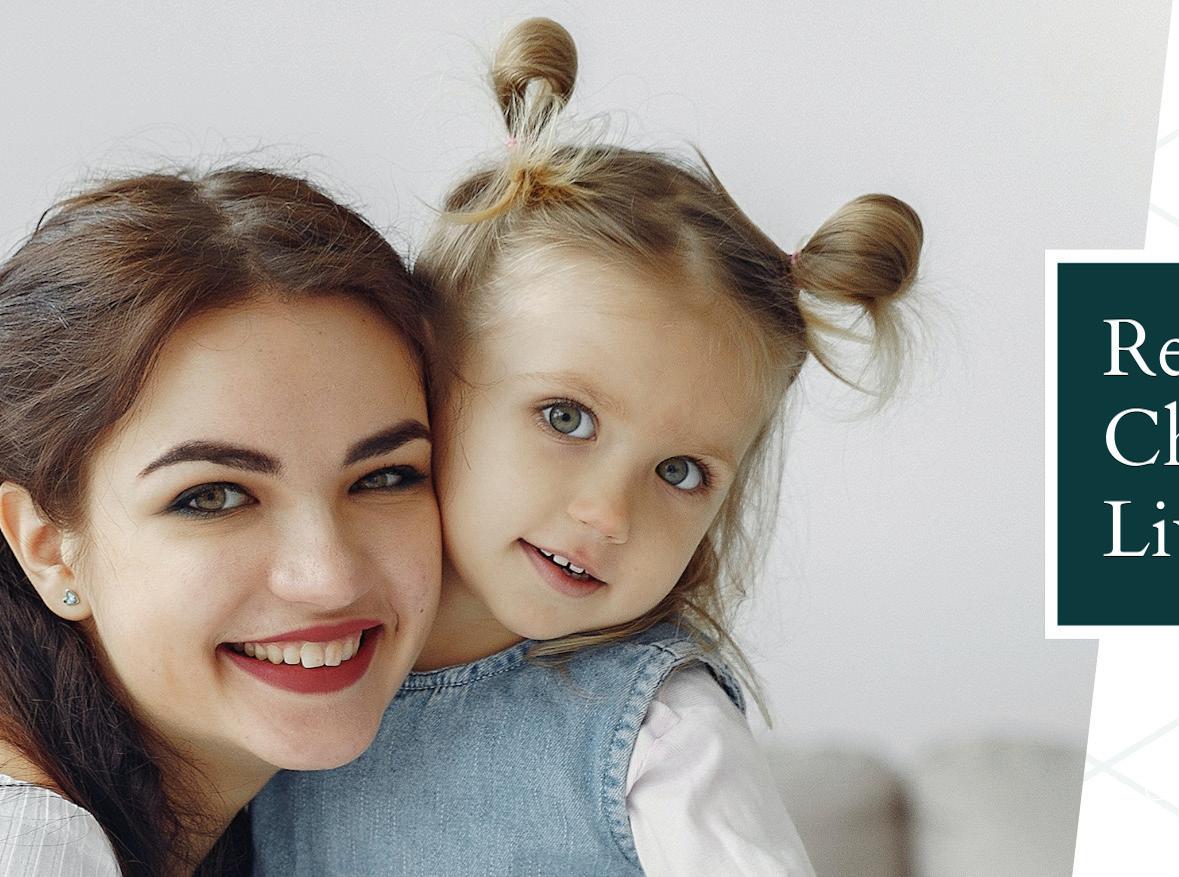
Grades Pre-3 – PRE-K 7704 24th Ave NW, Seattle 98117 pcseattle.org/preschool
Open house: January 25, 6 - 7:30 p.m.
Morningside Academy
Grades 2 – 9 1605 17th Ave., Seattle 98122 morningsideacademy.org
Schedule your tour today
Northwest School for Deaf and Hard-ofHearing Children Grades Preschool – 8 15303 Westminster Way N, Shoreline WA 98133 northwestschool.com For tours please contact info@northwestschool. com
The Sammamish Montessori School
Grades Toddler – Kindergarten 7655 178th Place NE, Redmond 98052 booking.setmore.com/scheduleappointment/1 afe8106-f986-42af-8704-43d7dcd09589
Individualized tours are given by appointment.

Seattle Country Day School
Grades K – 8 2619 4th Avenue N, Seattle 98109 seattlecountryday.org
Open house: November 2, 5 - 7 p.m. For tours, call 206-812-8907
Seattle Jewish Community School
Grades K – 5 7217 Woodlawn Ave. NE, Seattle 98115 SJCS.net
Open House: November 13, December 8
Applicant Student Visit Day: January 31, February 1
Spruce Street School
Grades K – 5 914 Virginia Street, Seattle, WA 98101 sprucestreetschool.org
Open house: December 2, 10 a.m. - 12 p.m. January 6, 10 a.m. - 12 p.m.
Villa Academy
Grades Pre-K – 8 5001 NE 50th St., Seattle 98105 thevilla.org
Open house: October 7, 10 a.m. - Noon
Wilderness Awareness School
Grades K – 12
Duvall wildernessawareness.org/youth-school-yearprograms
Tours by appointment



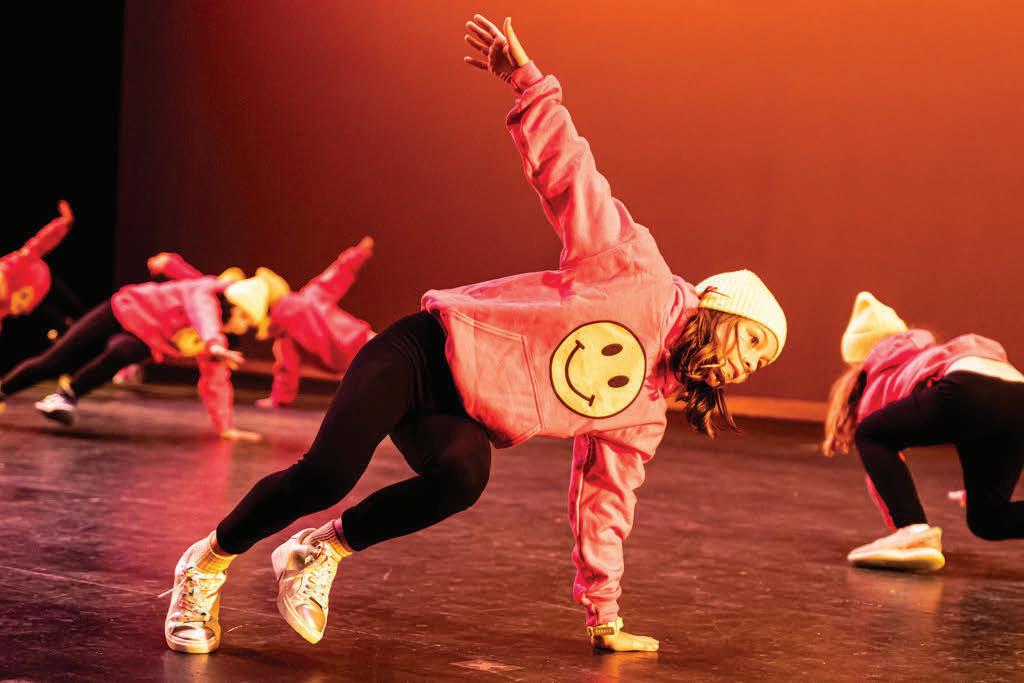

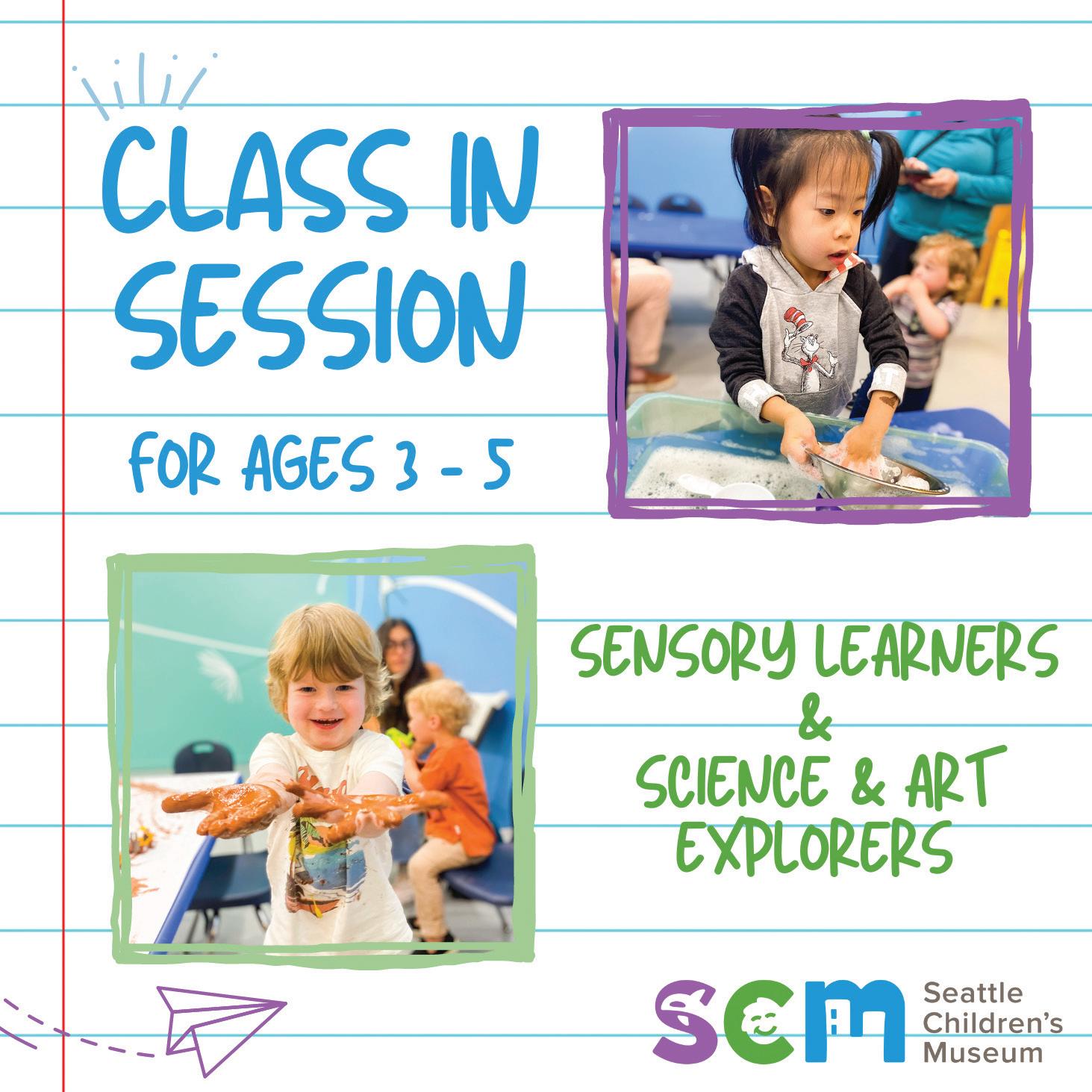


ACADEMIC SUPPORT & SCHOOL
Alliance Française de Seattle
Ages 1.5-17
4649 Sunnyside Ave N., Suite 205, Seattle 98103 206-632-5433 info@afseattle.org afseattle.org
Give your child the gift of French at the Alliance Française de Seattle, a leading French language school in the Pacific Northwest! Our youth enrichment program expands horizons and fosters multicultural fluency for children of all ages. From toddler and afterschool classes to teens AP prep courses, AFSeattle proposes an engaging and dynamic curriculum adapted to all levels, offered online and in-person.
Samena Swim & Recreation Club Preschool
Ages 2.5-4 (Preschool), Ages 5-12 (Before & After Care)
15231 Lake Hills Blvd., Bellevue 98007 425-746-1160
info@samena.com samena.com
Samena Preschool is a play-based curriculum addressing social and motor skills, art, STEM and swimming. Samena Before & After Care is a state-licensed program for children ages 5-12, with fun and safe activities from art and games to swimming.
Seattle Children’s Museum

Ages 0-10 with classes offered for ages 3-5 Seattle Armory Building 305 Harrison St., Seattle 98119 206-441-1768
info@seattlechildrensmuseum.org
seattlechildrensmuseum.org/ preschool-classes
Our classes provide your child with an intimate, welcoming environment to learn and develop in. We’ll ensure your child cements crucial skills and explores concepts to help prepare them for preschool and elementary education, while also learning about themselves, the world around them, and most importantly, while having fun!

Session 1: September 6-October 20. Session 2: October 23-December 8.
ARTS & CRAFTS
Gage Academy of Art
Ages 6 and older
1501 10th Ave. E, Suite 101, Seattle 98102 206-323-4243
info@gageacademy.org
gageacademy.org
Comic artists, animators, game designers, and graphic artists all start somewhere. With
Whether it’s the arts, science, sports or technology, there’s something to spark the interest of every young learner! Check out these amazing enrichment offerings around our city:
our roster of top-notch youth instructors, Gage Academy of Art offers both in-person and online youth programs to fit your family’s needs. From traditional painting and drawing to digital storytelling and character creation, your child will have the opportunity to thrive in a Gage Youth Program.

Cherish Academy

Ages 3-5.5
3100 S Alaska St., Seattle 98108 901-504-1115 director@thecherishacademy.com thecherishacademy.com
Cherish offers an innovative Early Learning Drop-In Program that caters to modern families. Our flexible preschool model provides convenience for parents and enriching socialization & fun for children. Choose your schedule and pay only for attended days. Our values include self-empowerment, cultural vibrancy, social responsibility, curiosity, innovation, creative thinking, nature appreciation, and mindfulness. Join us in nurturing and inspiring young, curious minds.
Samena Swim & Recreation Club Preschool
Ages 2.5-4 (Preschool), Ages 5-12 (Before & After Care)
15231 Lake Hills Blvd., Bellevue 98007 425-746-1160 info@samena.com samena.com
Samena Preschool is a play-based curriculum addressing social and motor skills, art, STEM and swimming. Samena Before & After Care is a state-licensed program for children ages 5-12, with fun and safe activities from art and games to swimming.

SJCC J Kids + J Teens
Grades PreK-12

3801 W. Mercer Way, Mercer Island 98040 206-232-7115, info@sjcc.org
sjcc.org/J-Kids
From after-school care to enrichment classes to sports leagues, Stroum Jewish Community Center J Kids + Teens programs have fun and engaging activities all year long. Whether they’re building robots or playing soccer, splashing in our pool or exploring their Jewish roots, kids and teens will explore, create, and make great friends in a warm and welcoming environment.
strengtheningfamilies@DCYF.wa.gov
i9sports.com
1145 12th Ave NW, Suite C1, Issaquah 98027 • 425-369-2949
i9 Sports offers youth sports programs to children ages 4 to 14 in the Puget Sound and South Seattle areas. Sports include Baseball, Basketball, Flag Football, and Soccer. Our programs run year round including clinics, leagues and summer camps. We are convenient for today’s busy families with a one-day commitment; practice is prior to the game each week. We focus on sportsmanship, age appropriate instruction, fun, and safety. To us, it’s The Way Youth Sports Should Be.®
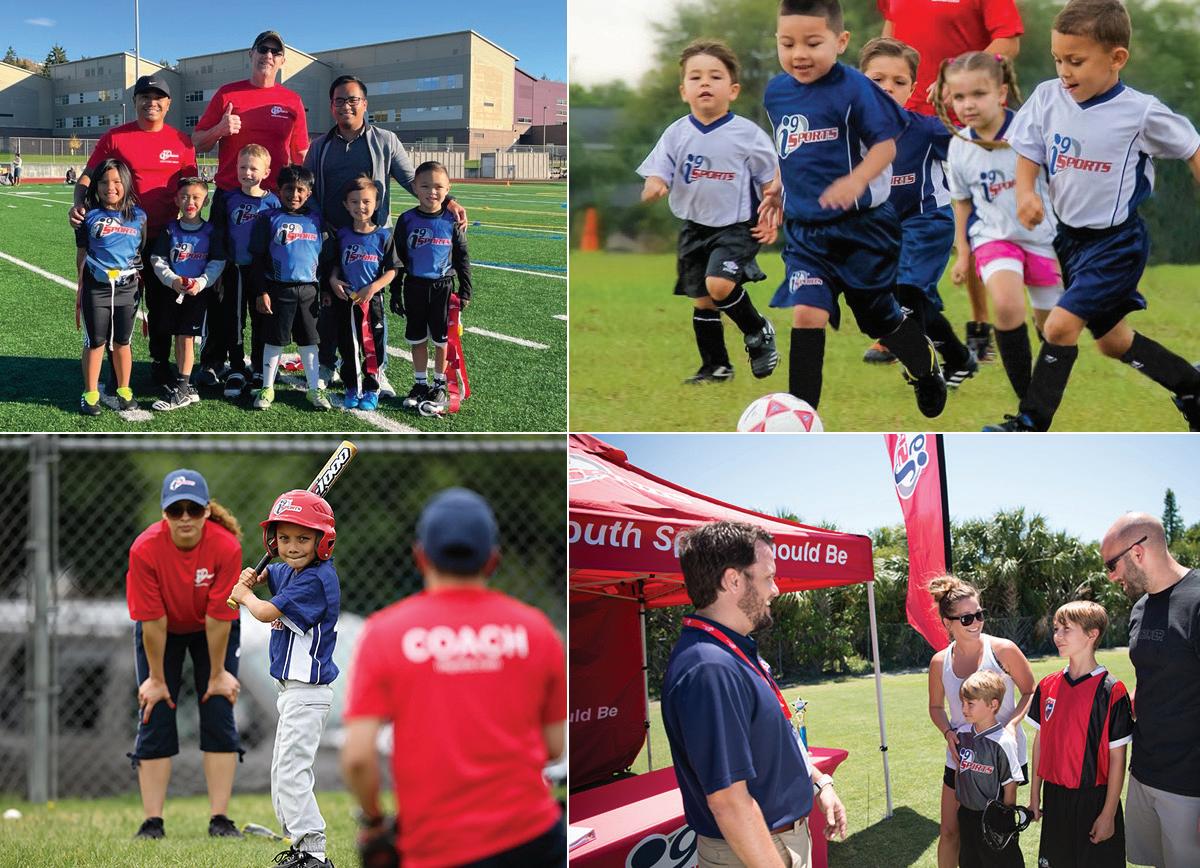
hablatherapies.com

Seattle • speechlanguagefeeding@hablatherapies.com
At Habla Therapies, our mission is to empower Seattle families from all walks of life to help their children thrive, communicate effectively, and live fun, fulfilling lives. We individualize our speech, language, and feeding therapies to your child’s needs, empower families with parent training, and our service model focuses on equity, flexibility, and affordability. We’re a bilingual provider that provides services in English and/or Spanish. Contact us today and take the first step toward unlocking your child’s potential!

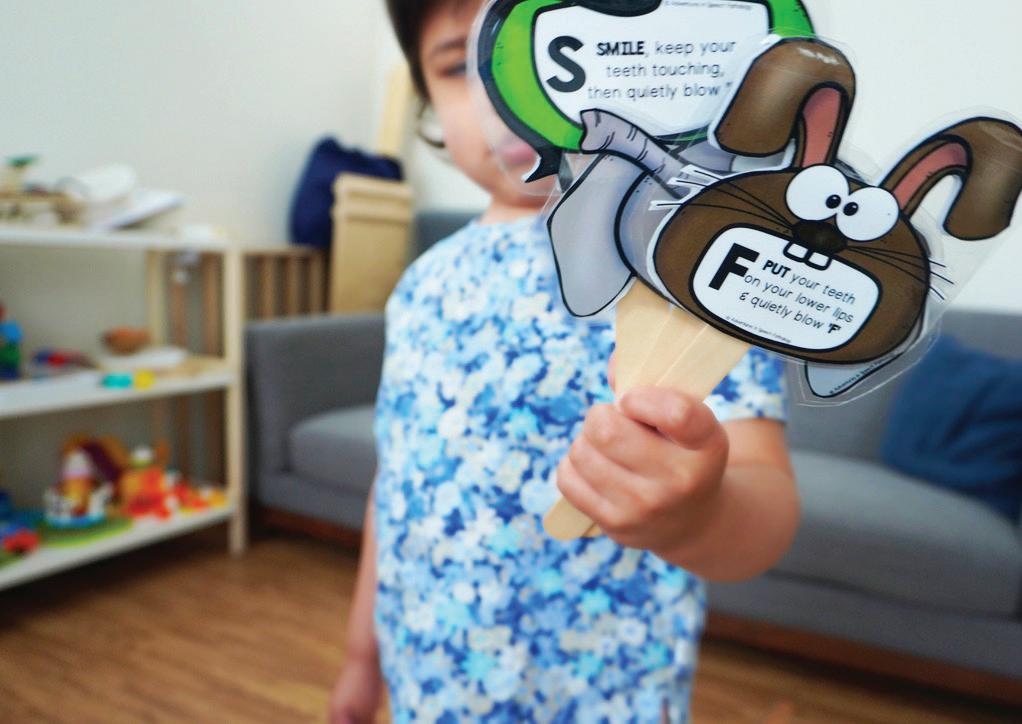




Enroll now for fall classes!
Nurturing Baby • Caregiver-Child • Dance & Art Family Dance • Creative Dance • Ballet Modern • Hip Hop • Adaptive BrainDance

A portion of the proceeds from each birth certificate benefits the Children’s Trust Fund of Washington, administered by the Washington State Department of Children, Youth & Families (DCYF) Strengthening Families Program.
• This official birth certificate is personally signed by the Governor and State Registrar.


• Certificate is 8 1/2 x 11 and includes the name, date and place of birth, as well as the name and birthplace of the parent(s).
• Frameable keepsake.
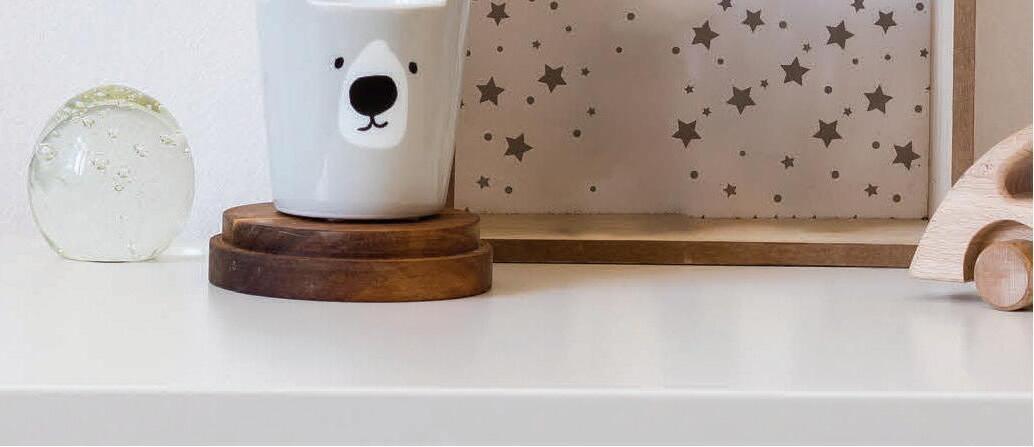
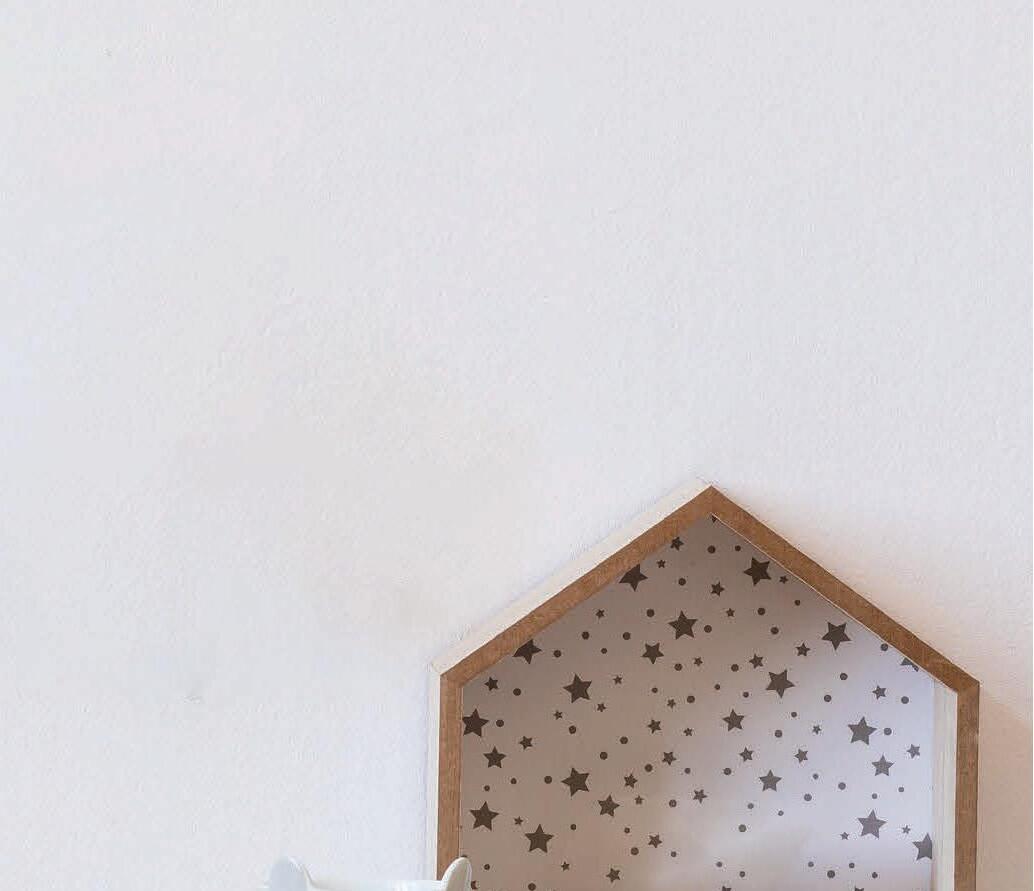
• For each $45 purchase of an Heirloom Birth Certificate, $20 is tax deductible.
To buy a certificate, visit the Department of Health or order online at: www.doh.wa.gov/LicensesPermitsandCertificates/ BirthDeathMarriageandDivorce/OrderCertificates/ HeirloomBirthCertificates’
To find out more information on Children’s Trust, child abuse prevention and the DCYF Strengthening Families Program visit: www.dcyf.wa.gov/services/ child-developmentsupports/sfwa
is a program within the Department of Children, Youth & Families, whose main focus is helping families become stronger together through a variety of tactics, including home visiting, community outreach and partnerships, and funding opportunities with local organizations. In addition, we assist with several public-awareness campaigns, including Speak Up When You’re Down, Have A Plan: Shaken Baby Syndrome, and Safe Sleep.
Ages Newborn-15
407-705 -7924

speechlanguagefeeding@ hablatherapies.com
hablatherapies.com

At Habla Therapies, our mission is to empower Seattle families from all walks of life to help their children thrive, communicate effectively, and live fun, fulfilling lives. We individualize our speech, language, and feeding therapies to your child’s needs, empower families with parent training, and our service model focuses on equity, flexibility, and affordability. We’re a bilingual provider that offers services in English and/or Spanish. Contact us today and take the first step toward unlocking your child’s potential.
Samena Swim & Recreation Club Preschool
Ages 2.5-4 (Preschool), Ages 5-12 (Before & After Care)
15231 Lake Hills Blvd., Bellevue 98007 425-746-1160
info@samena.com
samena.com



Samena Preschool is a play-based curriculum addressing social and motor skills, art, STEM and swimming. Samena Before & After Care is a state-licensed program for children ages 5-12, with fun and safe activities from art and games to swimming.
Seattle Children’s Museum
Ages 0-10 with classes offered for ages 3-5
Seattle Armory Building 305 Harrison St., Seattle 98119 206-441-1768

info@seattlechildrensmuseum.org
seattlechildrensmuseum.org/ preschool-classes
Our classes provide your child with an intimate, welcoming environment to learn and develop in. We’ll ensure your child cements crucial skills and explores concepts to help prepare them for preschool and elementary education, while also learning about themselves, the world around them, and most importantly, while having fun!
Session 1: September 6-October 20. Session 2: October 23-December 8.

Grades PreK-12
3801 W. Mercer Way, Mercer Island 98040 206-232-7115 info@sjcc.org
sjcc.org/J-Kids
From after-school care to enrichment classes to sports leagues, Stroum Jewish Community Center J Kids + Teens programs have fun and engaging activities all year long. Whether they’re building robots or playing soccer, splashing in our pool or exploring their Jewish roots, kids and teens will explore, create, and make great friends in a warm and welcoming environment.
Hibulb Cultural Center & Natural History Preserve
All ages
6410 23rd Ave. NE, Tulalip 98271 360-716-2600 hibulbculturalcenter.org
The Hibulb Cultural Center and Natural History Preserve is a place to learn about the cultural values and history of the Tulalip Tribes. Interactive displays give you a historic perspective of the connectedness of the Tulalip Tribes. Celebrate the traditional, usual and accustomed territories of Tulalip that serve as a constant reminder of the tribes’ historic connection to the land. Check our website for more information.
Seattle Children’s Museum
Ages 0-10 with classes offered for ages 3-5
Seattle Armory Building 305 Harrison St., Seattle 98119 206-441-1768 info@seattlechildrensmuseum.org seattlechildrensmuseum.org/ preschool-classes
Our classes provide your child with an intimate, welcoming environment to learn and develop in. We’ll ensure your child cements crucial skills and explores concepts to help prepare them for preschool and elementary education, while also learning about themselves, the world around them, and most importantly, while having fun! Session 1: September 6-October 20. Session 2: October 23-December 8.
NATURE & OUTDOORS
Oxbow Farm & Conservation
Ages 4-18
10819 Carnation-Duvall Road NE, Carnation 98014
425-788-1134
thedirt@oxbow.org
https://www.oxbow.org
Oxbow’s Farm Field Trip Adventures focus on the seasons, organic farming, and connecting with the ecosystem in unique ways. These hands-on, guided field trips for schools and groups open kids’ eyes, ears, noses, and taste buds to life, big and small, on our kid-friendly vegetable farm. Students participate in seasonal farm activities such as
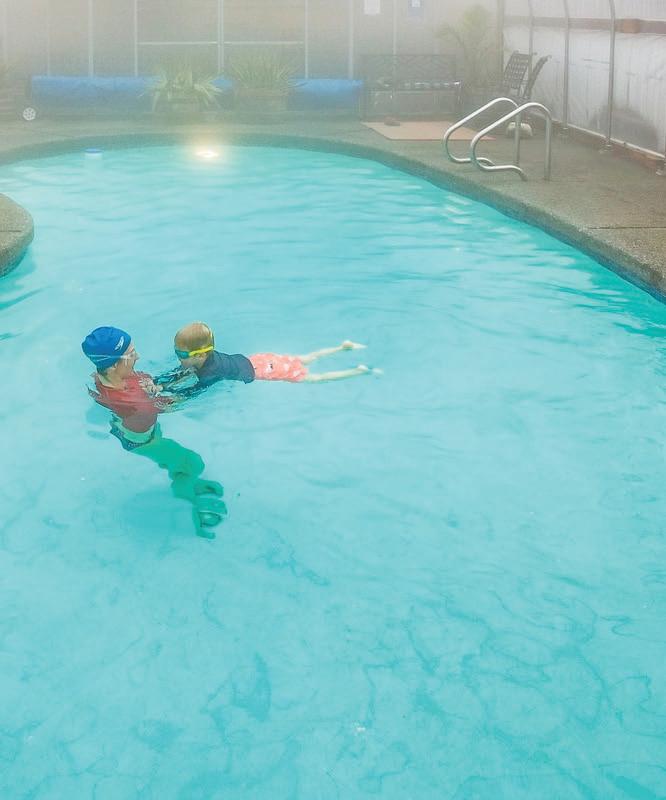
SPOTS AVAILABLE FOR SUMMER & FALL
ONE-ON-ONE LESSONS FOR SWIMMERS WHO ARE...
nervous
special needs
neurodivergent
of all ages and abilities!
CURRICULUM BASED ON NEUROSCIENCE AND THE BRAIN-BODY CONNECTION
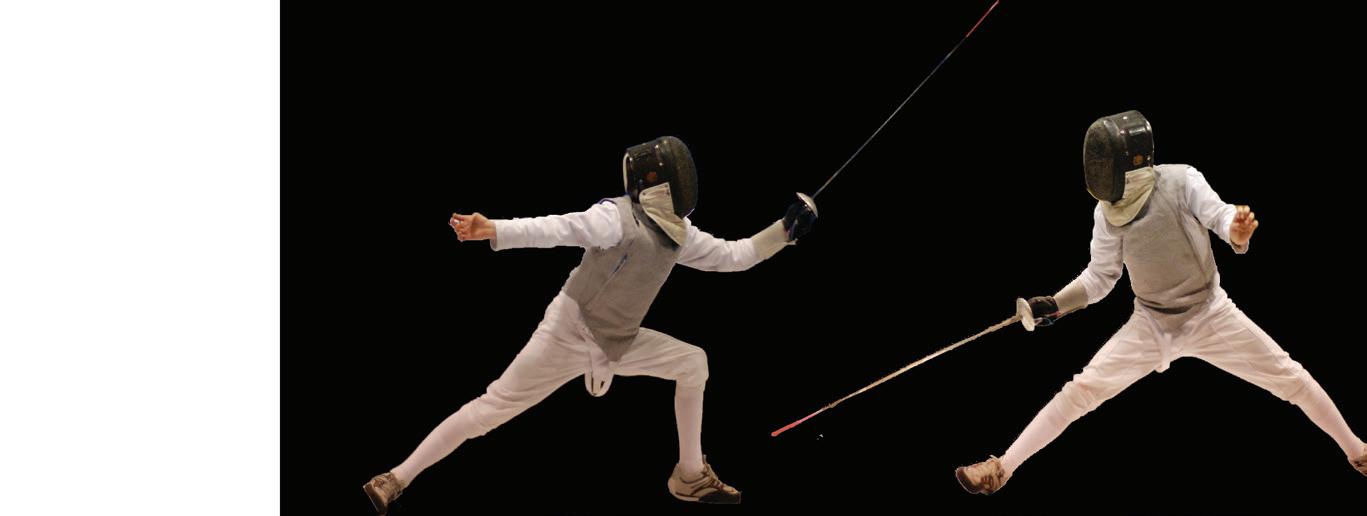
New offerings for your Littlest Fish!
Our Littlest Fish program for babies aged 6 months to 2 and a half years gives your tots a fi rst splash in the pool. We have caregiver tot small group classes and one on one lessons with caregiver and little one with an instructor in the pool together. Come join us!
LITTLEFISHSWIMSCHOOL.NET

@littlefishswimschoolseattle
littlefishswimschoolseattle@gmail.com
Pool heated to 90° for maximum comfort!

Book lessons easily from our app! Scan to download.




Weekly music class for children birth to age 8 & the grown-ups who LOVE them! www.sunshinemusictogether.com

206.281.1111




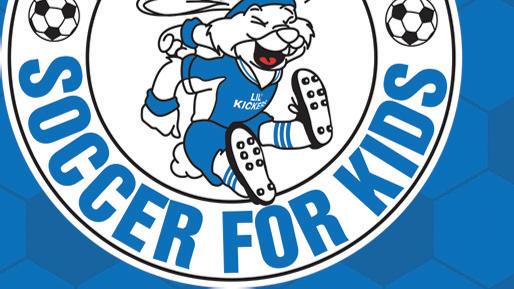


18 months - 12 years
Kids have a blast at our weekly classes, which are led by high-energy coaches and packed with creative games based on child development theory. Kids will learn soccer basics while achieving ageappropriate developmental milestones.


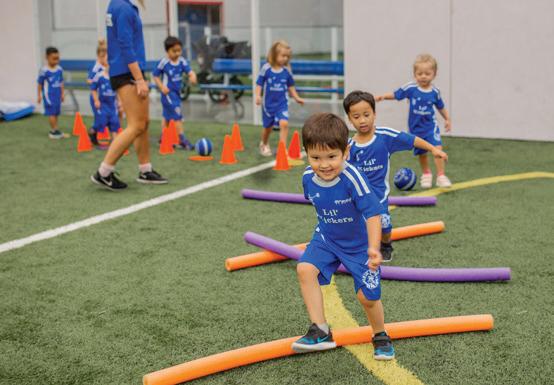
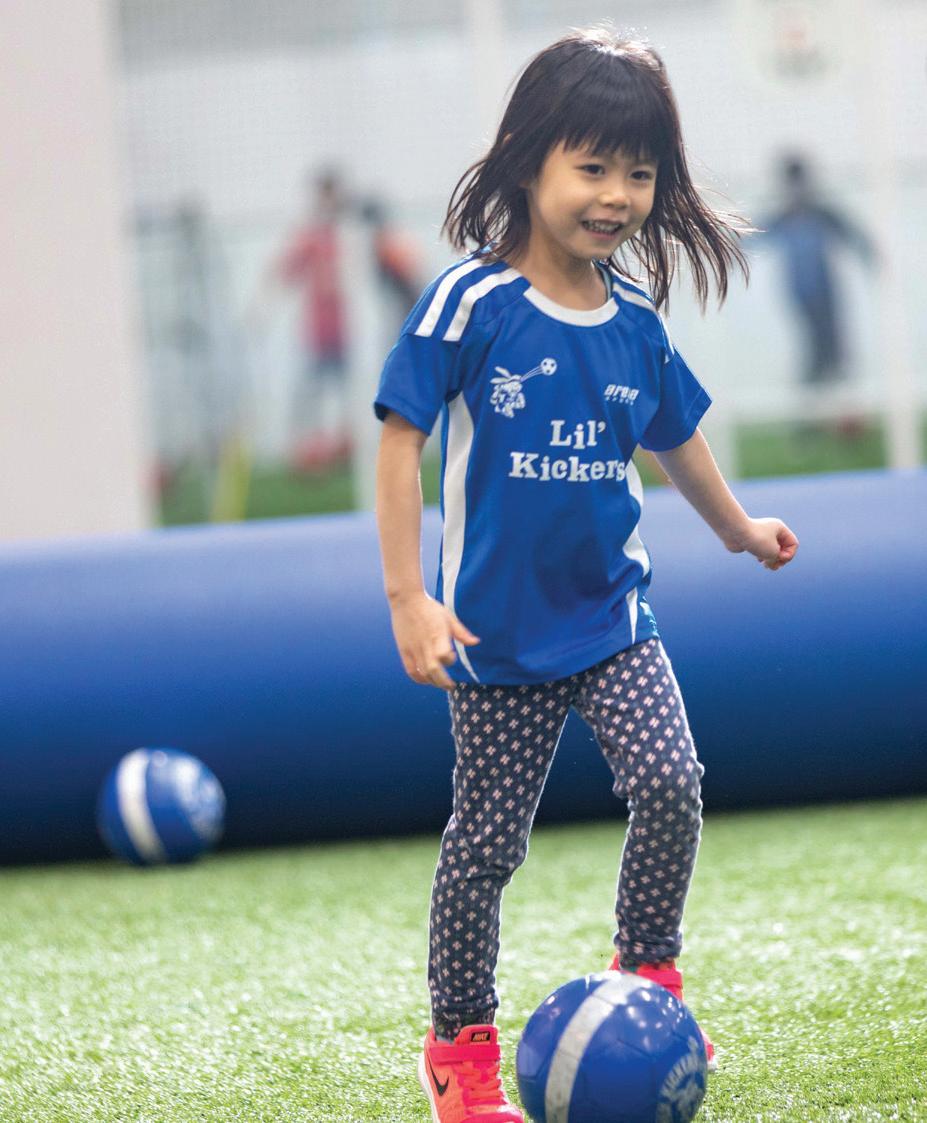
planting seeds, tending raised garden beds, and harvesting.
Wilderness Awareness School
Ages 4-18
PO Box 219, PMB 137, Duvall 98019 425-788-1301

wasnet@wildernessawareness.org
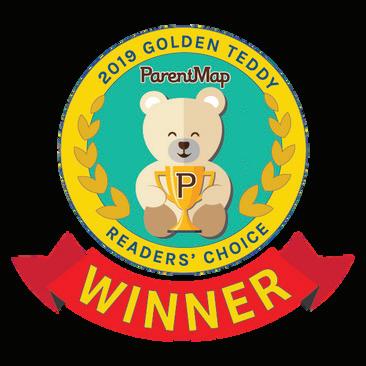
wildernessawareness.org/ youth-school-year-programs
Monthly and weekly school-year nature programs create a strong connection to the outdoor world, as facilitated by highly experienced nature mentors. Opportunities are available in five convenient locations (Seattle, Kenmore, Issaquah, Carnation and Duvall) and are offered for kids ages 4-18. With more than 35 years of experience mentoring in nature, Wilderness Awareness School is an internationally recognized leader in outdoor education. Our mission is to help children and adults cultivate healthy relationships with nature, community, and self.
DANCE
Ages 18 months-18
3012 NE Blakeley St., Seattle 98105 206-524-8944 info@all-that-dance.com allthatdanceseattle.com
With dance classes, camps, and more, All That Dance has been Seattle’s home for dance for more than 28 years. Explore ballet, tap, jazz, lyrical, pop styles (formerly hip hop), modern, and more in our welcoming community.

American Dance Institute

Ages 2.5 - Adult
8001 Greenwood Ave. N., Seattle 98103 2410 32nd Ave W, Seattle 98199 7500 25th Ave NE, Seattle 98115 1240 NE 175th St. Shoreline 98155 206-783-0755 adiseattle@americandanceinstitute.com www.americandanceinstitute.com
Classes include Ballet, Jazz, Tap, Modern Dance, Hip-Hop, Flamenco, and Irish Dance – at four convenient locations in Greenwood, Magnolia, Shoreline, and Wedgwood.
ARC Dance
Ages 3 and older
9250 14th Ave. NW, Seattle 98117 206-352-0799 info@arcdance.org arcdance.org
Our school offers classical ballet programs of exceptional quality for dancers of all ages and backgrounds. We work to meet students’ varying interests in dance, ranging from beginning to adult education to the professional career bound. ARC Ballet School’s mission is to provide high-quality classical ballet training in an encouraging atmosphere, thus promoting personal growth and artistic self–expression.
Ages 2 months and older
12577 Densmore Ave. N, Seattle 98133 206-363-7281
info@creativedance.org creativedance.org
The Creative Dance Center nurtures creativity and learning through joyful dance experiences. Year-round classes include Nurturing Baby, Caregiver/ Child, Creative Dance, Modern, Ballet, Hip Hop, and Adaptive BrainDance. There are classes for the whole family--early childhood, elementary ages, middle school, high school, and adult. The Creative Dance Center is where dance and brain development play together.

Ages 3 and older
12368 Northup Way, Bellevue 98005 425-883-3405 info@emeraldballet.org emeraldballetacademy.com

Emerald Ballet Academy provides high-quality instruction and performance opportunities to students of all ages and abilities. EBA’s international faculty recognizes that every child is unique, and nurtures each dancer with a broad range of training and support. Classes offered include pre-ballet, ballet, pointe, character, contemporary, jazz, stretching, conditioning, partnering, boys’ technique, and a free class for young boys. 4X winner of YAGP’s Outstanding School award. Come try out your first class for free!
Ages Newborn-5 (mixed-age classes)
Locations in Ballard and Phinney Ridge 206-334-8002
chickadeemt@gmail.com
chickadeemusic.com
Sing, dance, play and learn. Chickadee Music Together offers engaging, research-based family music classes for children and the grownups who love them. The songs in our nine collections span a rich variety of tonalities, meters, and musical styles. Indoor and outdoor classes are available.


All ages
4435 Rainier Ave. S, Seattle 98118 206-953-8277
frontdesk@metermusicschool.com
metermusicschool.com

Take Lessons at Meter Music School. With locations in the Central District and Columbia City, Meter provides lessons and classes for kids and adults. Our teachers offer fun and engaging instruction for complete beginners and experienced musicians. MiniMeter classes are also available for babies and toddlers with a grown-up.

Ages Newborn-8
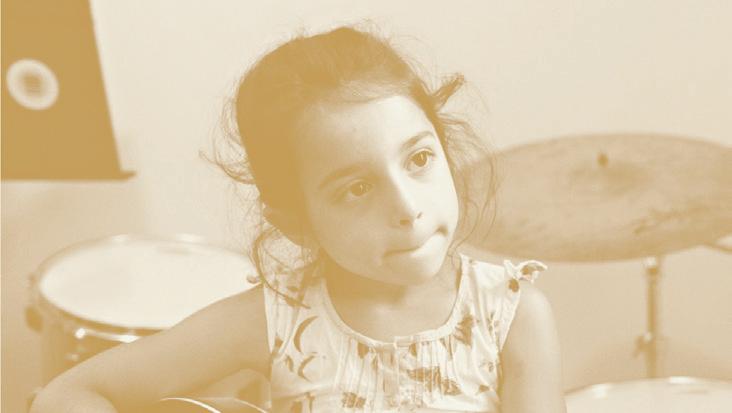
Multiple Locations
206-281-1111
info@sunshinemusictogether.com sunshinemusictogether.com
Music Together is an internationally recognized, research-based music development program for children birth-5 and the grown-ups who love them. Also offering Rhythm Kids for children ages 5-8 and Babies classes for newborn-8 months. Class sessions run in fall, winter, spring and summer, with locations in Queen Anne, Magnolia, West Seattle, Green Lake, and Capitol Hill.

All ages
1314 E. John St., Seattle 98102 206-324-3119 contact@bviolinsltd.com bviolinsltd.com



We offer a large selection of rental violins, violas and cellos. All of our rentals are set up and maintained in-house. If you’re buying an instrument or bow we offer a 10-day trial period. Try a couple of instruments and get opinions from teachers, friends and relatives. We also offer repair, restoration and appraisal services.

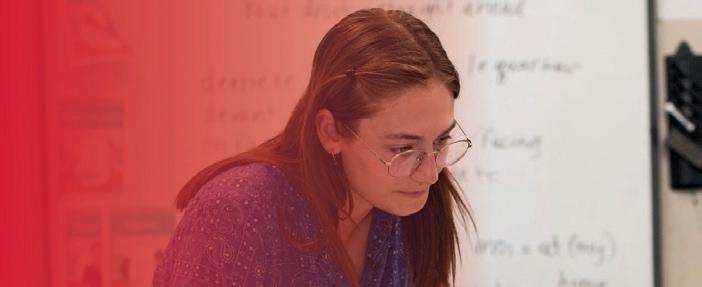


Mountain to Sound Outfitters
3602 SW Alaska St., Seattle 98126 206-935-7669 m2soutfitters.com/ ski-snowboard-rentals.htm m2soutfitters.com
Mountain to Sound offers seasonal and daily rentals of skis/snowboards and even demo gear to try before you buy. Our season rentals kick off on October 1st. And don’t forget our biggest event of the year! Our annual Ski Swap is on 10/15 &16. Be sure to sign up to sell your old gear.
SPORTS & WELLNESS

i9 Sports Puget Sound & South Seattle
Ages 4 to 14
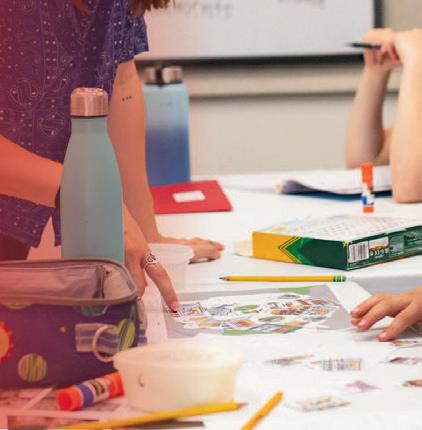
1145 12th Ave. NW, Suite C1, Issaquah 98027 425-369-2949


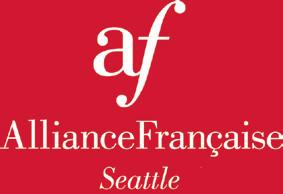
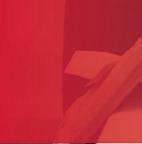

seattle@i9sports.com www.i9sports.com
i9 Sports offers youth sports programs to children ages 4-14 in the Puget Sound and South Seattle areas. Sports include baseball, basketball, flag football, and soccer. Our programs run year-round, including clinics, leagues, and summer camps. We are convenient for today’s busy families with a one-day commitment; practice is prior to the game each week. We focus on sportsmanship, age-appropriate instruction, fun, and safety. To us, it’s The Way Youth Sports Should Be.®
Ages 18 months-12
Issaquah, Seattle, Mill Creek, Redmond, Snohomish info@arenasports.net arenasports.net/classes

Lil’ Kickers and Skills Institute teaches great soccer skills in ways that others just don’t. Classes are packed with creative games structured to help kids tackle age-appropriate developmental milestones. Rooted in renowned child development theories, our innovative curriculum provides kids the skills they need to learn soccer and grow as individuals, all while having a blast.
Ages 6 months-adult
Locations: three local backyard pools covered by toasty-warm greenhouses: 12564 17th Ave. NE, Seattle 98125 13017 3rd Ave. NE, Seattle 98125 18520 63rd Ave. NE, Kenmore 98028 littlefishswimschoolseattle@gmail.com littlefishswimschool.net
We teach one-on-one swim lessons in quiet and serene backyard swimming pools covered by a greenhouse with water that is toasty-warm. We work with swimmers of all ages and abilities, including our Littlest Fish program with classes for caregivers and tots to have their first experiences in a pool together with the guidance of a wonderful instructor. Book one lesson and try us out, always enrolling and open lessons available.
Ages 8-adult
1776 136th Place NE, Bellevue 98005 425-747-6300 info@raincityfencing.com raincityfencing.com
How do you score touches on your opponent without getting hit yourself? It takes fast thinking, dynamic footwork and a good strategy. The Olympic sport of fencing is safe, exciting and fun! We have classes and summer camps for ages 8-adult. All fencing equipment is provided. Think. Fast. Fencing!
Grades PreK-12
3801 W. Mercer Way, Mercer Island 98040 206-232-7115 info@sjcc.org sjcc.org/J-Kids
From after-school care to enrichment classes to sports leagues, Stroum Jewish Community Center J Kids + Teens programs have fun and engaging activities all year long. Whether they’re building robots or playing soccer, splashing in our pool or exploring their Jewish roots, kids and teens will explore, create, and make great friends in a warm and welcoming environment.

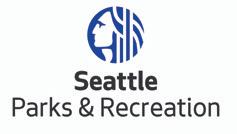
Cherish Academy presents a free opportunity for families with children ages 3-5.

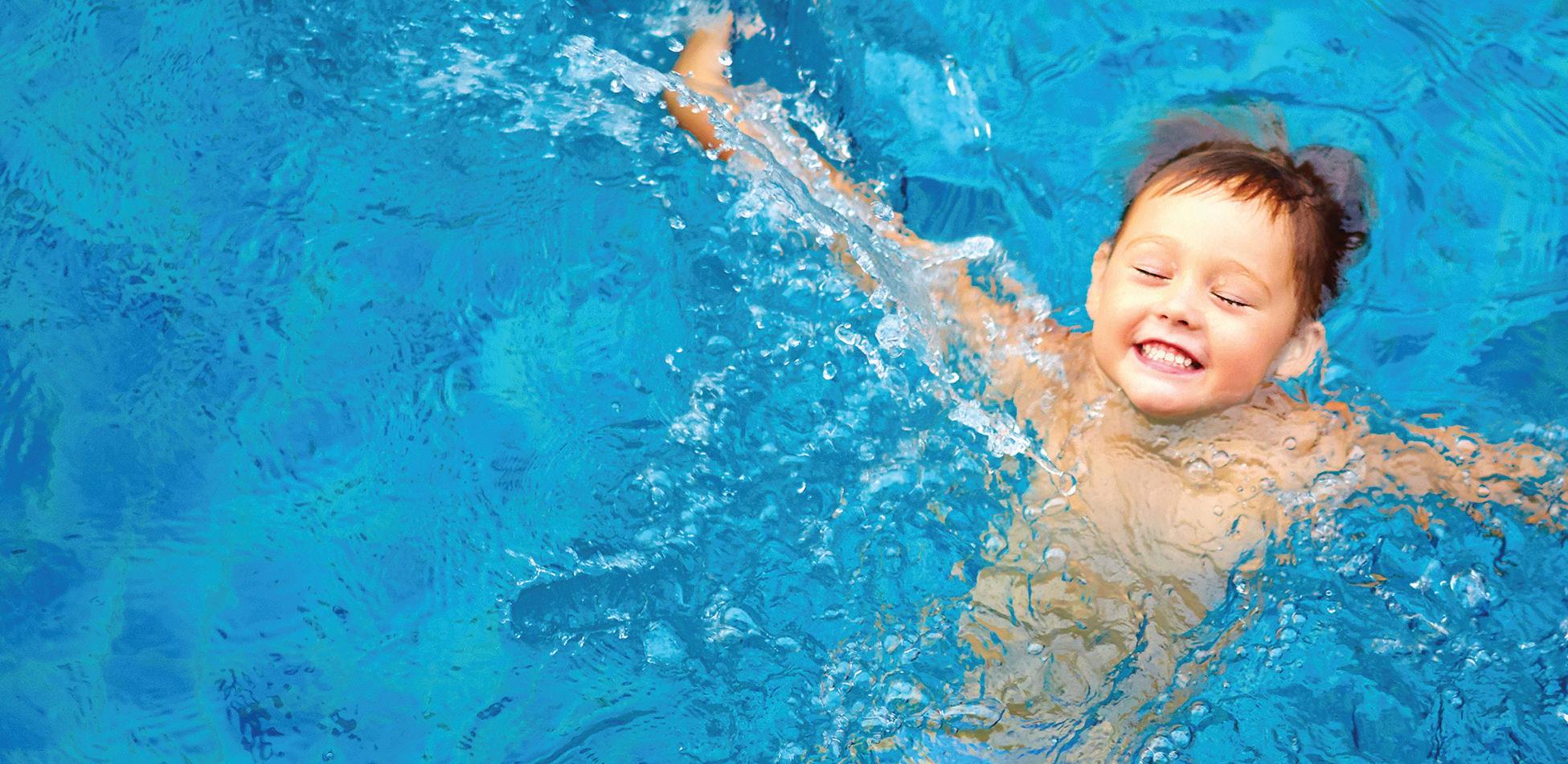
SENSORY PLAY DAY


Aug. 25, 9:30 AM - 12 PM



Playdoh, slime & more!


REPTILE MAN
Sept. 8, 11 AM - 1 PM
20 reptiles! Look, touch & learn!
GROSS MOTOR DAY
Sept. 15, 9:30 AM - 12 PM
Field day with lots of play!
each other.
Our flexible preschool model provides convenience for parents and enrichment for children. Choose your schedule and pay only for attended days. Columbia
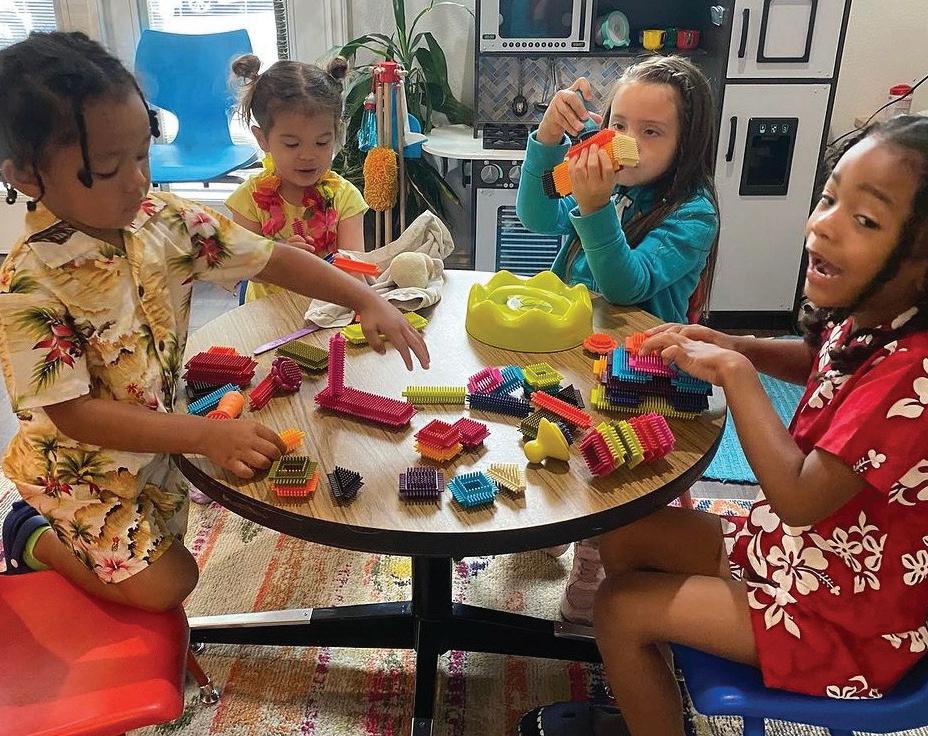
Our values include self-empowerment, cultural vibrancy, social responsibility, curiosity, innovation, creative thinking, nature appreciation, and mindfulness. New students are always welcome. Join us in nurturing and inspiring young, curious minds.


thecherishacademy.com


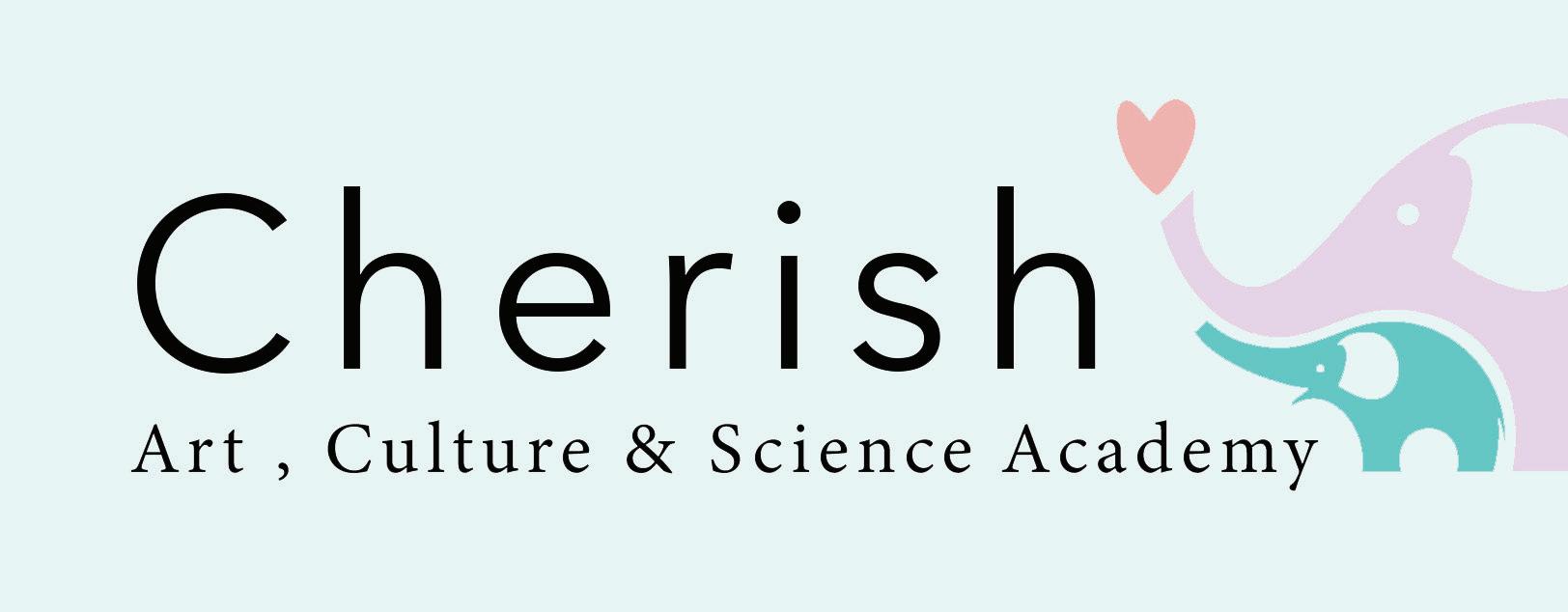
We hope to inspire children to be life-long learners, stewards of the environment &206-200-9449 | Seattle • Lynnwood • Bellevue
Guided or self-guided tours,
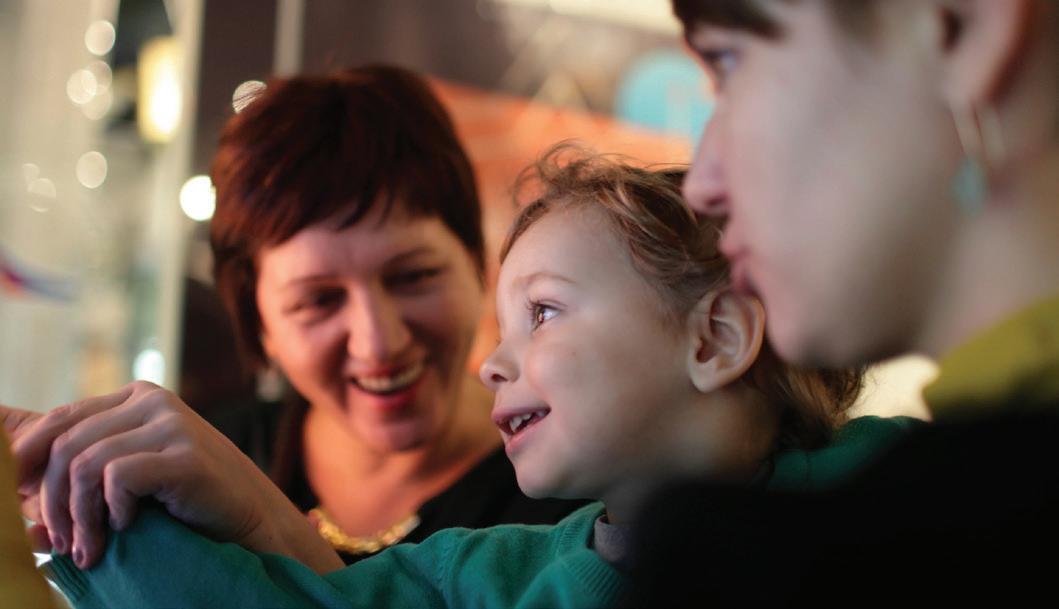
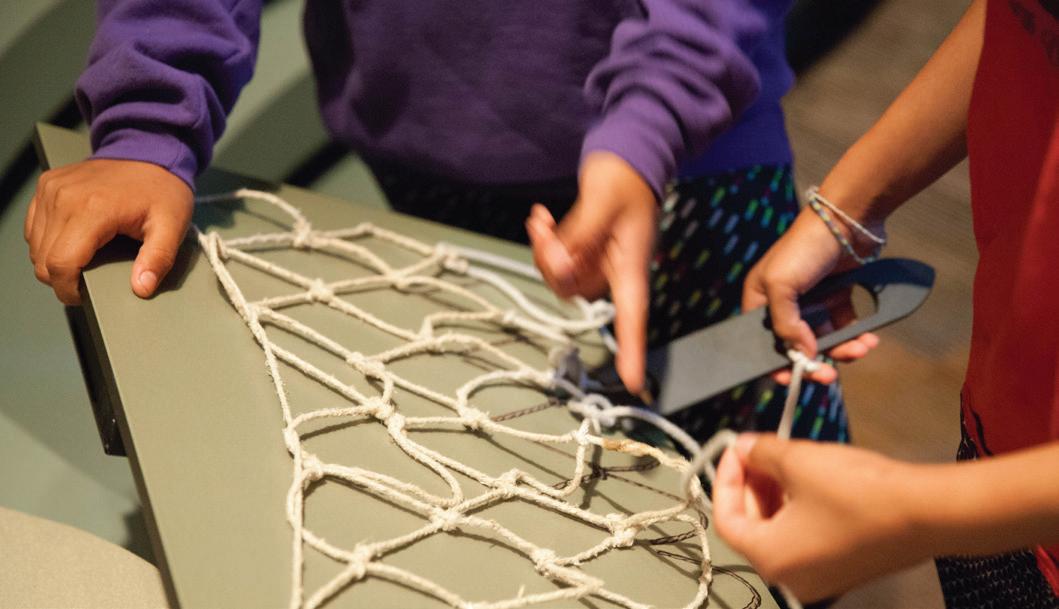


info@HibulbCulturalCenter

